from 8 new tours and departures
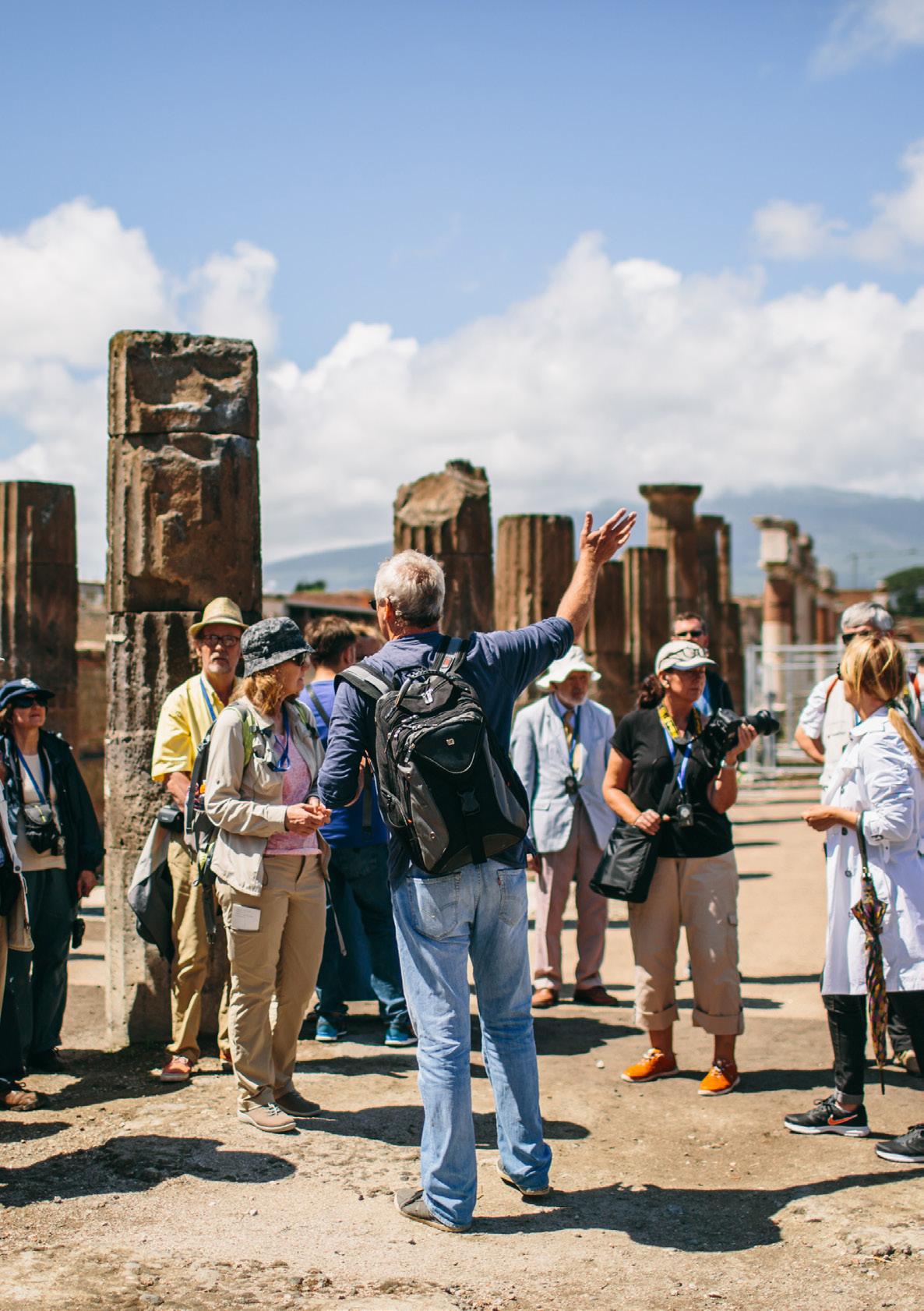
Save up to £450pp | £0 Single Supplement places available 8 new tours | 3 additional departures | Small groups | Guided by experts


from 8 new tours and departures

Save up to £450pp | £0 Single Supplement places available 8 new tours | 3 additional departures | Small groups | Guided by experts

Dear Traveller,
We are thrilled to announce the launch of our latest collection of tours, featuring some spectacular new destinations, designed to enhance your travel experience. Our locations and itineraries have broadened to include even more exciting visits to archaeological wonders and historic sites.
This edition introduces a host of unique tours, such as Kazakstan, an escape to a majestic landscape of high mountains and green valleys. Uncover more on this varied exploration, as Dr Peter Brown guides us on the meanings behind the thousands of petroglyphs decorating the rocks at Tamgaly from the Bronze and Iron Ages, some accompanied by Tibetan inscriptions and the story behind the dead city of Sauran.
Delve even deeper into the wonder that surrounds Pompeii, on Beyond Pompeii – The Land of the Sibyl, as we descend underground into the catacombs and remnants of the ancient city. Or discover many UNESCO World Heritage Sites including the majestic Taj Mahal and Jaipur’s Amber Palace on North India, Maharajahs & Mughals, with expert guide Dr. Mehreen Chida-Razvi.
Wherever your next adventure takes you, you can be assured of an unforgettable time away on an Andante holiday, as small groups guided by knowledgeable and passionate experts to unique archaeological sites make for a wonderful and memorable venture. Our prices include accommodation, travel and expertly guided excursions so that you can relax and enjoy your experience. We’re also on hand if you need advice, ideas, insights or extra arrangements – please do get in touch!
We are confident that these new tours will exceed your expectations, and you’ll discover the perfect archaeological adventure.
We look forward to the pleasure of your company soon.

Jackie Willis CEO


a
today. They are ready to help with all of your questions.
We are thrilled to celebrate our 40th anniversary, marking four decades of innovation, dedication, and growth.
Founded in 1985, Andante Travels started as a small group with a big vision. Over the years, we have expanded our horizons to deliver exceptional tours to our valued customers and create immersive experiences that uncover the rich tapestry of the ancient world. Today we are proud to be one of the foremost providers of archaeological tours.
Trust Andante Travels to deliver exceptional tours backed up by our expertise and experience.
Herculaneum & Classical Campania tour with no single supplement to pay. Please refer to page 11 for more details.
If
The expertise, passion and knowledge demonstrated by our Andante Guide Lecturers bring history to life. Whether you are handling artefacts, enjoying behind-the-scenes access, or listening to lectures as you go, our guides will be on hand to ensure your experience on tour is both memorable and immersive.
Oliver Gilkes
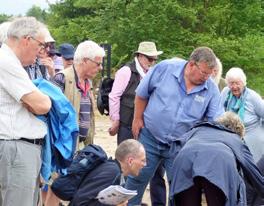
One of our longest-standing Guide Lecturers, Oliver has worked as a field and museum archaeologist in the UK, Albania and Italy. Join Oliver on our Albania tour p14 and Christmas in Rome tour p28
Paul Nicholson
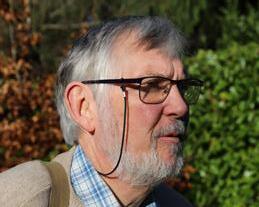
Prof. Paul Nicholson is a Professor of Emeritus of Egyptian Archaeology at Cardiff University and is experienced in directing excavations in Egypt. Join Paul on the The Archaeology of Upper Egypt tour p20
Dr Mehreen Chida-Razvi

Mehreen is a Research Associate in the Department of the History of Art & Archaeology at SOAS, University of London, and Assistant Editor for the International Journal of Islamic Architecture. Join Mehreen on our North India tour p22
Dr Eireann Marshall

A previous Wanderlust World Guide Awards-winner, Eireann is set to lead several of our tours in 2025 including the Cruising Malta, Sicily & Campania p6 & Venice at New Year p26
Dr Peter Brown
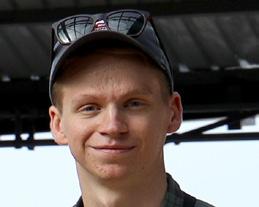
An archaeologist specialising in the medieval world across Europe and Eurasia. He has worked on a variety of archaeological field projects and published on long-distance trade and the growth of cities during the medieval period. Join Peter on our Kazakhstan tour p10
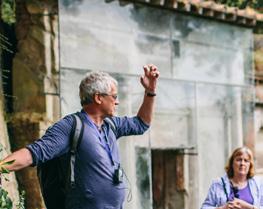
Winner of the Wanderlust World Guide Award - History & Culture 2023, John has worked extensively in the field in Europe as an archaeologist. Join John on our Pompeii, Herculaneum & Classical Campania tour p8 & Beyond Pompeii, The Land of the Sibyl p16
Dr Doru Bogdan

A researcher and lecturer at the University of Alba Iulia in Romania, Dr Doru Bogdan is a specialist in Roman archaeology. Join Doru on the Frontier Lands of Romania tour p12 and Ancient Catalonia p20
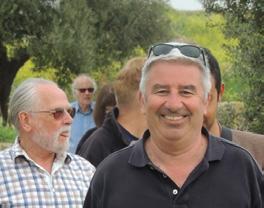
A specialist in the Roman Empire and an archaeologist with extensive field experience. Tony has been leading tours for Andante for over 20 years to Syria, Northern Egypt, Libya, Italy & Pompeii. Join Tony on our Pompeii tour p8 & Carthage & Roman Tunisia at New Year p28
Dr Simon Elliott
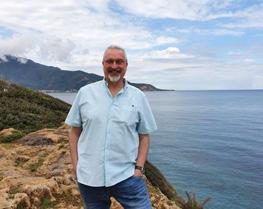
An award-winning and best-selling author, historian and broadcaster, Simon is an Honorary Research Fellow at the University of Kent. He is also a Trustee for the Council of British Archaeology. Join Simon on our Pompeii, Herculaneum & Classical Campania tour p8
Diana Blumberg
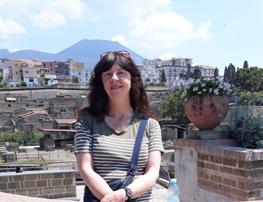
Diana Blumberg is an archaeological scientist who specialises in the analysis of archaeological materials. She has worked on archaeological field schools in both Pompeii and Portus. Join Diana on on our Pompeii, Herculaneum & Classical Campania tour p8
Dr Rita Roussos

Rita Roussos taught archaeology and art history at the American University of Athens. Her research interests include the place of women in ancient Greece and Rome as well as Greek sculpture of the fourth century BC. Join Rita on our Athens at New Year tour p27
Dr Gillian Shepherd

Director of the Trendall Center for Ancient Mediterranean Studies at La Trobe in Australia, Gillian specialises in the Greek colonisation of Italy and Sicily. Join Gillian on our Pompeii, Herculaneum & Classical Campania tour p8
The price you pay for your Andante Travels tour offers excellent value for money. Most aspects of your tour are included, covering everything from return flights and entry to all sites mentioned in the itinerary to tips and treats. More often than not, wine is also included with dinner. Consequently, the only additional expenses you may need to budget for during your holiday are souvenirs and drinks at the bar.
If you require assistance with official form-filling or advice on what to pack, our friendly team is always available to help from the office. While you are on holiday, our Tour Manager is there to assist you, whether it's a quick phone call or just a short distance away. With round-the-clock support from our operations team, we are ready to provide practical assistance at every stage of your tour.

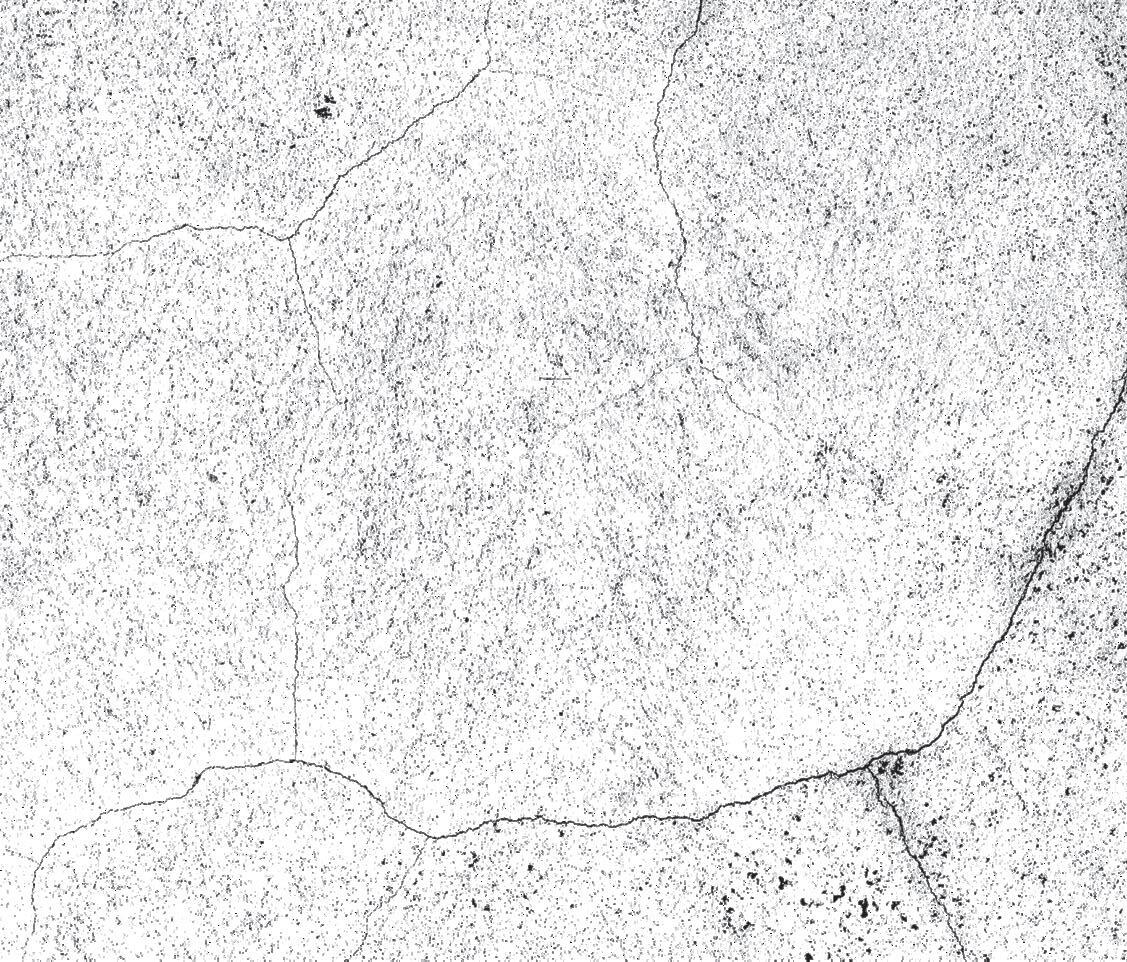
STONE IS LEFT UNTURNED TO ENSURE YOU RECEIVE THE MOST INCLUSIVE HOLIDAY
We make sure that we have included as much as possible in the cost of your holiday. From group flights and transfers, guides and entrance fees, tips for local staff, domestic flights where appropriate and, on most of our tours, all meals which often include wine with dinner. It’s all covered so you can simply relax and enjoy your tour.
We know the destinations and sites we visit inside and out, which enables us to create the most in-depth, allencompassing, and immersive tours possible for our guests. We know the best way to get you there, the most effective routes to travel around and how to make your time on site as memorable and worthwhile as it can be.
Most of our tours are limited to 18 guests, which means that you get the chance to get up close and personal to those things you’ve only ever read about or seen on TV or film.
Every tour with Andante Travels is accompanied by a Guide Lecturer and a Tour Manager. Often you will be further joined by a local guide who adds an element of local flavour to the expertise from your Guide Lecturer. This means that you are never short of someone who will help you satisfy your curiosity.
All our accommodation is carefully chosen to help you get the most out of your tour. Location is key as we want to be close to the sites we visit and keep travelling between them to a minimum. Your accommodation costs are all included in the price of your holiday; however if you do fancy that extra bit of luxury, do contact us and we will be pleased to advise on room upgrades.
We know how important a good meal is whilst you are enjoying your holiday, so we have made sure that the majority of your meals are included in the price. Dinner is often taken at a local restaurant and most evening meals include wine.
Of course, all your group flights to and from the UK are included as well as all overseas group transfers.
We have partnered up with The Travel Visa Company who are a leading provider of travel visa services in the UK, with over 25 years of experience in helping travellers navigate the complexities of international travel.
Their team of dedicated visa experts also serve independent travellers based in the UK, offering personalised assistance and streamlined application processing. With their knowledge and expertise, they ensure a hassle-free experience for all travellers, from the initial application to the final approval.
They offer a comprehensive range of visa services for destinations globally and include the new ETIAS process for UK travellers. You can call them on 01270 904901 or contact them via their website www.andantetravels.co.uk/visas
We make it easy to join your Andante Travels tour with a full UK Travel service. If you need help travelling in the UK, with overnight airport accommodation or regional flights, we are here to help.
Regional flights - We offer flights from your local airport to many European destinations and further afield to join your holiday.
Connecting flights - If your holiday destination is not served by your regional airport, we can arrange UK connecting flights or travel to London airports.
Rail and air travel - Let us help with your travel by rail or air to your tour starting-point.
Car parking - Let us help with your airport or port parking.
Airport hotels - Relax with an overnight stay before or after your tour.
For that little something extra - Beat the crowds and relax with an airport lounge and Fast Track security where available.
Do you fancy a bit more leg room, a more generous luggage allowance, lounge access or a flatbed if you are flying overnight, then upgrading your flight will make your journey much more comfortable.
Below you will see the flight upgrade options available; other airlines are also available – please call for details.

Travelling in World Traveller Plus; British Airways’ Premium Economy cabin*, you will enjoy a smaller cabin with wider seats, a greater recline, lumbar support, a head and footrest and more leg room. You will be served two delicious meals and a complimentary bar service, whilst enjoying the personal entertainment system with noise cancelling headphones. A more generous luggage allowance and an onboard amenity kit will be provided as well as priority boarding.
* Product available on British Airways on long haul flights only

Start your Club Europe journey with access to comfortable departure lounges**, dedicated checkin** desks and priority boarding. On board you will have more personal space to relax and enjoy the selection of delicious meals including full British breakfast, lunch, traditional afternoon tea and dinner. Alongside your meals, you can enjoy a range of hot, cold, and alcoholic drinks. You also benefit from a larger baggage allowance than in Euro Traveller.
** Where available

Relax in style before your flight with a dedicated check-in and lounge access. Once on-board, you will enjoy a fully flatbed on all long-haul flights with luxury bedding and an amenity kit. Delicious food and drink are served using local ingredients, and you can select your main course, served with a starter, dessert, and cheese. During your flight you can choose from snacks, plus hot, cold, and alcoholic drinks, all delivered to your seat. Their signature afternoon tea also features on some routes.




10 DAYS
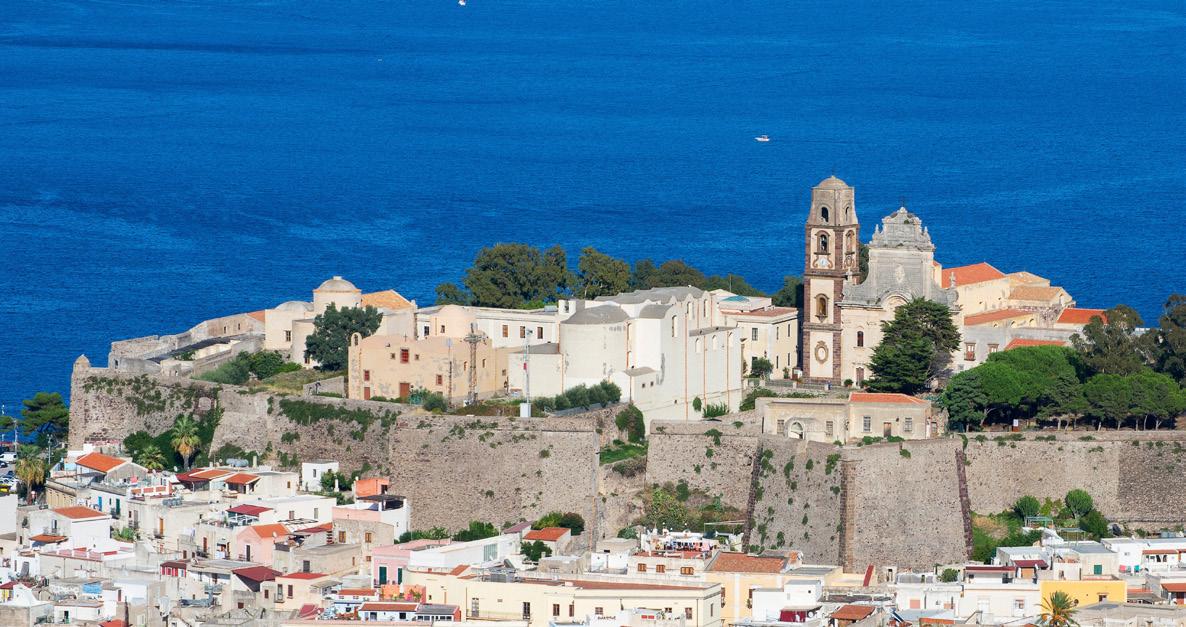
On this cruise into the heart of the Mediterranean we weave together three remarkable destinations: the sun-drenched Maltese archipelago, the historic island of Sicily, and the breathtaking region of Campania along Italy’s western coast. Like all Mediterranean islands, Sicily and Malta were the stop-off points for many different peoples and as this vibrant blending of cultures was brought about by ancient maritime trade, the best way to appreciate the kinship of these islands is by ship, retracing the routes used by people for so many centuries. From the honey-coloured streets of Valletta where Crusader knights left their indelible mark, to Sicily’s tapestry of Greek temples, Norman palaces, and Baroque piazzas, every port of call tells a story spanning millennia. Our tour ends in Naples, a city with a distinct character marked by passionate locals, rich artistic traditions, and a unique blend of Mediterranean culture that sets it apart from northern Italian cities.
Day One | London - Valletta
We fly from London to Malta and transfer to our hotel.
Day Two | Valetta - Porto Empedocle
Outstanding in its cultural integrity, the handsome capital of Valetta was created as a new town for the Knights of St John in 1571. We spend some time getting to know this unique fortified Renaissance city with a guided walk around its historic heart. Our visits include St. John’s Cathedral famed for its stunning masterpieces painted by Caravaggio and the Grand Master’s Palace with facades of some of the many Auberges of the Knights. We round off the morning with a visit to the Archaeological Museum where we see an exceptional array of artefacts including the Sleeping Lady, the sumptuous representation of a sleeping mother figure found in the Hypogeum at Hal Safliemi. In the afternoon we visit the magnificent temple sites at Haġar-Qim and Mnajdra, megalithic structures which sit clustered close together at the top of a promontory with superb views over the sea. Their use of as religious or ceremonial places have been determined through the on-site discoveries of animal bones, sacrificial flint, knives and rope holes, possibly used to hold sacrificial animals. This evening we embark on our cruise and sail overnight from Valletta to Sicily.
Our first port of call is to Porto Empedocle where the ship moors for the day. The town is the closest sea port to the famous Valley of the Temples at Agrigento and is also well known as the fictional “Vigata” in Andrea Camilleri’s popular Inspector
Montalbano detective novels. Andrea Camilleri who was born in Porto Empedocle, used the town and its surroundings as inspiration for his beloved series. Tonight, we sail towards Trapani.
Exclusive Andante Excursion: We drive to Agrigento, the Valley of the Temples and spend a whole day exploring the magnificent World Heritage site of the ancient Greek city of Akragas. Here we see the finest series of Greek temples anywhere in the world including the remarkably well-preserved Temple of Concord, with its elegant walls and columns. We also view the remains of the Temple of Olympian Zeus, another gigantic, Sicilian temple, with an unusual design characterised by enormous telemons, architectural support shaped like a man, also called atlas or atlantids. One almost complete telamons has been recovered and reinstalled on site, the other survivor looms large inside the Regional Archaeological Museum of Agrigento which we will also visit today.
We arrive early this morning in Trapani. Positioned on the most western tip of Sicily, Trapani boasts a dramatic coastline that forms a natural sickleshaped harbour. It was an important trading post throughout history, particularly during the medieval period when it was a crucial stop for merchants travelling between Africa and Europe. Today it serves as a gateway to several notable attractions, including the Greek site of Segesta.
Exclusive Andante Excursion: This morning, we head out to Marsala; originally the Carthaginian settlement of Lilybaeum. It was renamed Marsa

al Allah by the Arabs and has been best known since the 18th century for its dessert wine trade. Here we visit the Archaeological Museum with its fascinating remains of a Carthaginian warship sank in the first Punic war. Among the objects displayed here are ropes, cooking pots, corks from amphorae, a brush, olive stones, a sailor’s wooden button and even a stash of cannabis. After lunch, we cross by boat to the island of Motya, a stronghold of the Phoenicians, sacked in 397 BCE by the Syracusan tyrant Dionysius the Elder. We explore the island including the North gate and the temple precinct and visit the Museum, famed for the remarkable statue of the Charioteer.
Our ship remains at Trapani this morning till after lunch when it sails to Palermo arriving in time for dinner this evening.
Exclusive Andante Excursion: After breakfast, we drive through magnificent countryside covered in olive groves and vineyards to the ancient Greek city of Segesta. We visit the superb doric temple and the high-stepped, semi-circular theatre which opens onto a breathtaking panorama over the surrounding countryside with the sea in the distance. In the afternoon we visit Monreale, the former hunting ground of the Norman kings of Sicily. Here, we discover an opulent NormanByzantine cathedral and abbey. The site achieved UNESCO World Heritage status in 2015 thanks to its stunning construction and mosaic work. Continuing towards Palermo we will also visit La Cuba, a 12th century Royal palace and another UNESCO listed site. Inspired by traditional pleasure palaces of the East, the pavilion is characterized by a wealth of
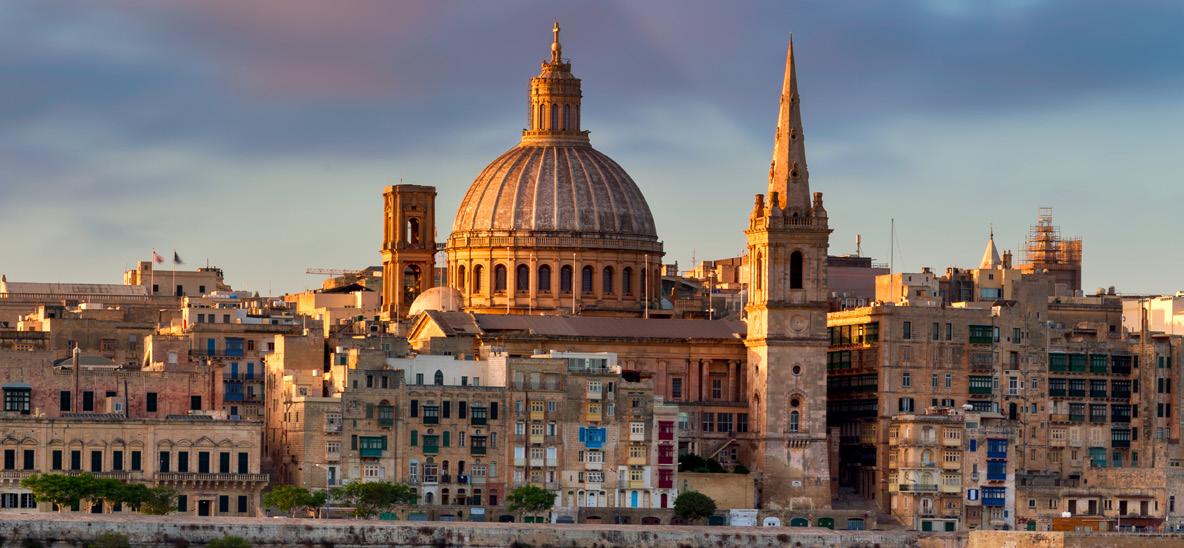
Visit the wonderful Co-Cathedral of St. John in Valletta with its staggering Caravaggio masterpieces
Explore the beautiful island of Lipari with its rich archaeological finds dating from the Neolithic to the Roman periods
Discover the stunning mosaics at Cappella Palatina in Palermo
Enjoy a full day at Pompeii where we admire the newly excavated House of the Leda alongside newly opened houses
Arabian architectural features. We will rejoin the ship in Palermo when it docks in time for dinner.
Evidence of Palermo’s rich history is everywhere you look. Arab and Norman architecture and design rub shoulders with the classical and Baroque. It is no surprise that its historic centre, along with the Cathedral Churches of Cefalù and Monreale, has been designated as a UNESCO World Heritage site, recognizing its unique Arab-Norman architectural style. Our ship moors in Palermo for the day before sailing towards Lipari later tonight.
Exclusive Andante Excursion: We spend the day exploring Palermo. First, we visit the Archaeological Museum, which houses one of the most significant collections of Punic and Ancient Greek art in all of Italy. Next, we visit a number of magnificent buildings from the time when Palermo was the richest port in western Europe. These include the beautifully decorated church of La Martorana with its mixture of styles and brilliant mosaics and the starkly contrasting Chiesa di San Cataldo with its soaring columns and stone vaults. After lunch, we visit Palermo Cathedral and the Cappella Palatina, the personal chapel of Roger II representing a glorious blend of cultures - a western basilica, above which are glistening golden mosaics from Byzantium, all overlooked by an intricately beautiful stalactite ceiling of wood in the classical Islamic style.
This morning we awake in Lipari, the largest of the Aeolian islands. In Homer’s epic poem, The Odyssey, Lipari was the home of Aeolus, the god of the winds, who helps Odysseus on his journey home from the Trojan War. Its position has always made it important to maritime trade, along with its precious resource: black volcanic obsidian which could be fashioned into weapons and utensils. Our ship lays at anchor here for the day before sailing overnight to Sorrento.
Exclusive Andante Excursion: We spend the day on the delightful island of Lipari which, like all Mediterranean islands, was colonised by many different peoples over millennia. We walk up from the harbour to the Castello area where we visit the Regional Aeolian Archaeological Museum whose rich collection of materials includes obsidian from the Neolithic period, as well as pottery from the island’s Greek period. After lunch we explore the Archaeological Park, located in what once was the Acropolis of the colony founded by Cnidus in 580 BCE.
Day Eight | Sorrento
Arriving in Sorrento early this morning, the ship sets anchor for the day. This charming coastal town perched on cliffs above the Bay of Naples makes an excellent base for exploring nearby Pompeii. The town itself offers spectacular views across the bay to Naples and Mount Vesuvius, especially beautiful at sunset when the lights begin to twinkle across the water.
Exclusive Andante Excursion: After breakfast we drive to Pompeii and devote our entire day to this incredible site. Nowhere compares in revealing the details of daily life in a Roman town. We visit some of the most well-preserved buildings as well as an amphitheatre, theatre, forum, bathhouses, bars, and brothels. Fountains in the street are worn where countless people rested their hands to take a drink and Roman graffiti still marks the walls. Travelling via the best routes to avoid crowds, we visit several villas that are newly reopened to the public.
We sail to Naples this morning where our cruise comes to an end. Disembarking after breakfast, we head to the Archaeological Museum in Naples. Here we explore this excellent museum which exhibits the precious frescoes and mosaics discovered in the Vesuvian towns, including the Alexander Mosaic and the paintings of Sappho and the Pompeii riot. The western wing has recently
MY Variety Voyager
This state-of-the-art Mega Yacht is 223ft in length, has 5 decks and is comparable to a 4*+ hotel. The glass enclosed dining room allows for spectacular views while you eat but also extends to an adjacent open deck area to allow ‘al fresco’ dining. There is a reception area with bar, a lounge area, a mini-spa and mini library. Sunloungers are available on the Sky Deck and the 360˚Sun Deck, which also has an outdoor lounge bar and seating area. Wi-Fi is payable locally. The 36 ocean view cabins on board are across three decks. Category P are located on the Upper Deck, category A on the Main Deck and categories B and C are located on the Lower Deck. The cabins vary in size from 13.7m² to 19.5m² with either portholes or windows and include a TV, CD/ DVD player, safe, mini fridge, individually controlled airconditioning, electricity 220V, ensuite bathroom with shower and toilet, a hairdryer and bathrobes.
Dr Eireann Marshall

Dr Eireann Marshall is a Research Associate and Associate Lecturer with the Open University. She has published a number of articles on Ancient North Africa, and coedited volumes on ‘Death and Disease in the Ancient City’ and ‘Women’s influence on Classical Civilisation’. Eireann has led many tours for Andante, including several to Ravenna, Venice, Pompeii, Sicily and Tunisia, and is bilingual in English and Italian.
re-opened following a decades long renovation project and showcases hundreds of previously stored finds from key sites in Campania. After lunch we explore two fascinating sites in Naples. Our first visit is to the church of Santa Chiara, burial place of the Angevin kings, and Bourbon dynasty where we admire the cloisters with their magnificent 18th century majolica tiles. Next, we visit San Lorenzo Maggiore founded in the late 13th century as a Franciscan church on the site of the site of the basilica (covered hall) of the Roman Forum.
Day Ten | Naples - London
We disembark this morning and transfer to Naples airport for our return flight home.
YOUR COMPREHENSIVE EXPERT GUIDED TOUR INCLUDES
• Expert Guide Lecturer & Professional Tour Manager
• Entries to all sites as per the itinerary
• Field notes
• All taxes & gratuities
Included travel
• Return flights from London & all local transport Accommodation
• 1 night at a hotel in Valetta, 7 nights onboard MY Variety Voyager & 1 night at a hotel in Naples
Culinary inclusions
• 9 breakfasts, 8 lunches & 9 dinners
• At hotels: water with all meals, wine & tea or coffee with dinner
• MY Variety Voyager: welcome cocktail, house wine, local beer, and soft drinks are included when lunch and dinner are being served on board. Water, filter coffee and tea are available throughout the day.
Dates & prices per person
Date Twin/Dbl Share SS 11th - 20th Jul
Please call or visit our website for details For full details of this tour visit andantetravels.co.uk/amic
Exclusive access to the off-site theatre of Herculaneum
8 DAYS FROM £2,990pp
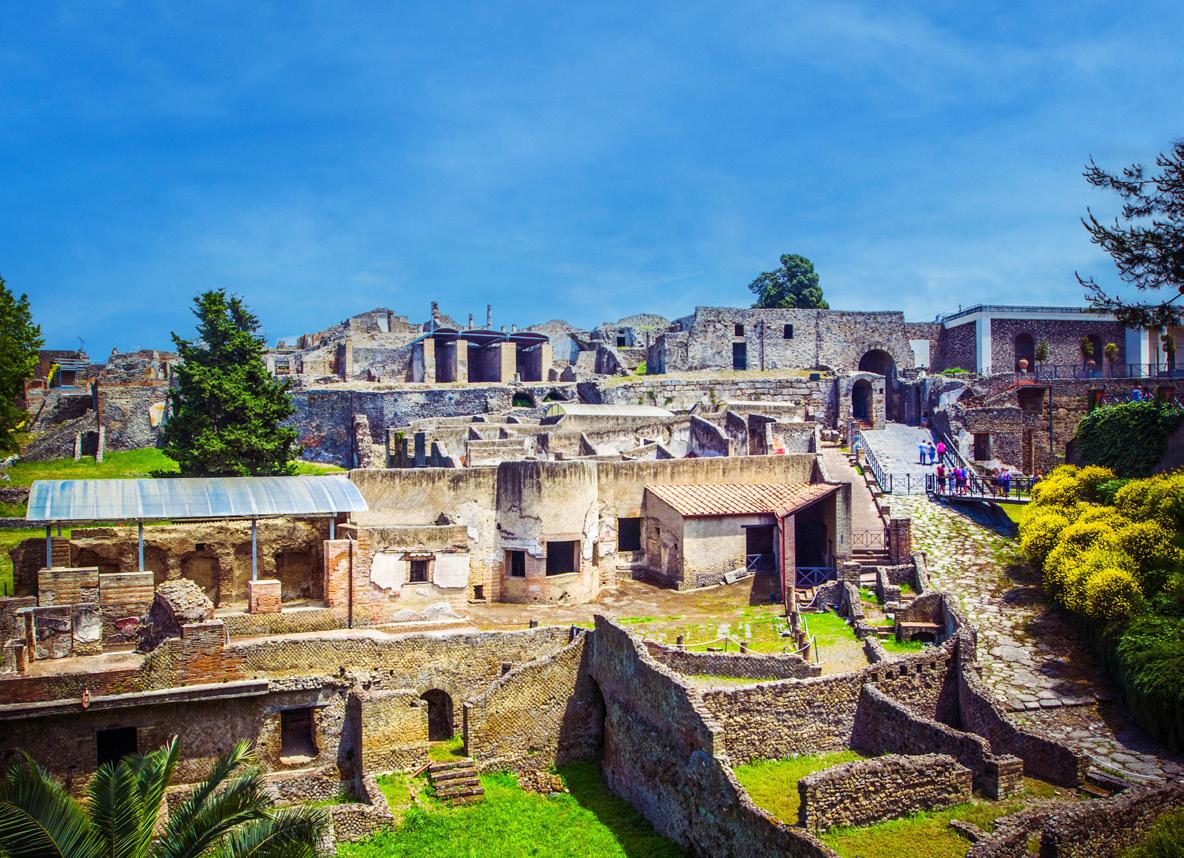
£0 SINGLE SUPPLEMENT PLACES AVAILABLE Activity Level
Nowhere in the world gives deeper insight into Roman life than the dramatic seaside towns of Pompeii and Herculaneum. Before the cataclysmic eruption of Vesuvius these were thriving, lively seaside towns.
Pompeii, a trading town equipped with many bars, shops and brothels, while neighbouring Herculaneum was an affluent and elegant town. All this came to an abrupt halt, however, one autumnal day in AD 79, when Vesuvius - which had done little more than rumble for yearserupted with incredible force.
Two thousand years later, the sites of the Bay of Naples confront the modern visitor with a vivid, haunting immediacy like nothing else in the ancient world. In some cases we even know the names, professions and personal histories of the people who owned the villas and shops we visit. The preservation of Herculaneum, Pompeii and its surrounding sites is remarkable and the archaeology beyond compare, which is why we have been leading tours here for over 30 years. And this is an exciting time for visitors as new discoveries are being made and new houses opened. Walk with us as the Romans did, from amphitheatre to baths to forum, as our Guide Lecturer conjures an evocative picture of the everyday life of these prosperous Roman towns.
Day One | London - Naples - Cava de’ Tirreni
Today we fly from London to Naples and then we transfer to our hotel on arrival.
Day Two | Cava de’ Tirreni - Paestum
Our day begins with a visit to the fascinating site at Paestum, ancient Poseidonia. Long before the Romans came, this was a thriving Greek city that was part of greater Greece from the 6th century BC. After lunch, we visit the Paestum Museum, famed for its archaic metopes and its painted tombs. We will also be able to visit the magnificent Store Rooms of Paestum.
Day Three | Pompeii
We devote the entire day to Pompeii. No other site compares in revealing details of daily life in a Roman town. We visit some of the most well-preserved buildings as well as an amphitheatre, theatre, forum,
bath-houses, bars and even brothels. Fountains in the street are worn from where countless people rested their hands to take a drink and Roman graffiti can still be seen on the walls. Travelling via the best routes to avoid the crowds, we visit some houses that are newly reopened to the public.

Our first visit of the day is to the fabulous National Archaeological Museum in Naples, home to exceptional collections of artefacts. After lunch, we move on to Pozzuoli and visit one of the world’s most impressive amphitheatres. Later, we are granted private access to the Cave of Sejanus, an impressive tunnel dating to the age of Augustus, which gives access to the lovely seaside villa of Pausilypon. D1uring our visit here, we can see a theatre and odeon, built at a later date.
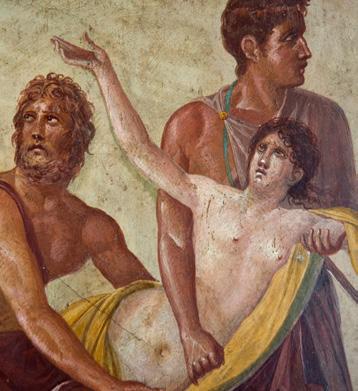
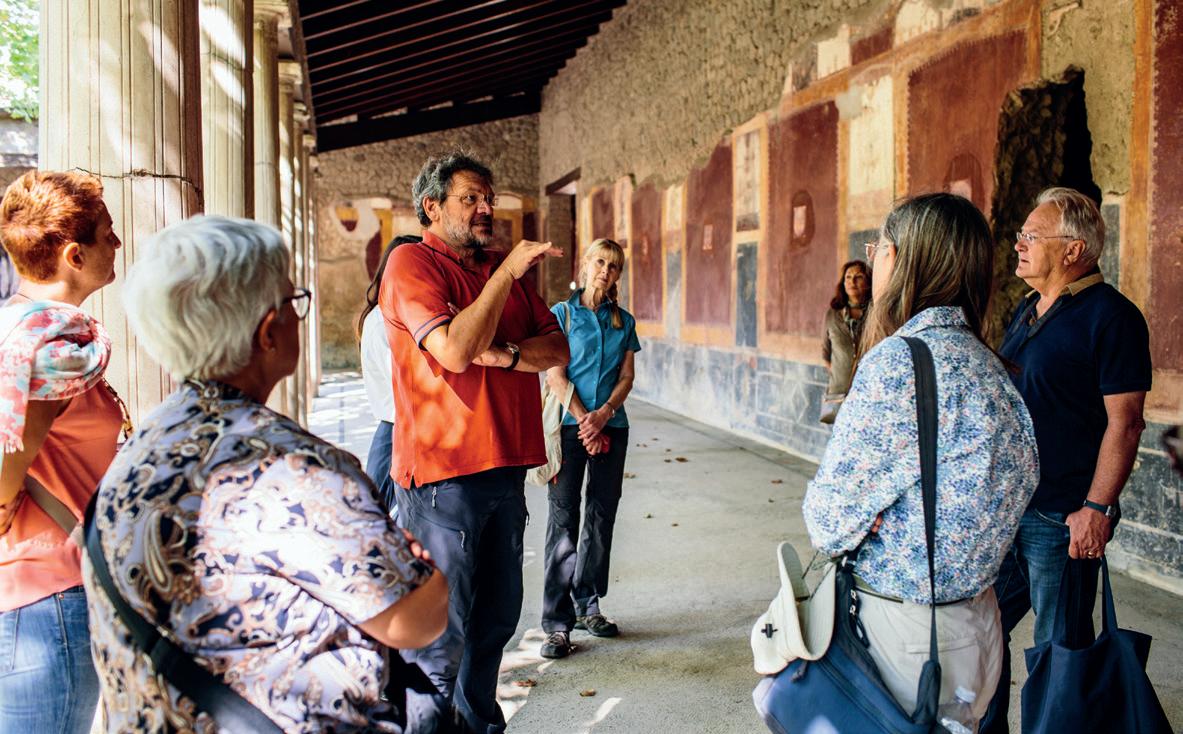
Enjoy visits to off the beaten track villas at Stabiae
Private access to the Cave of Sejanus (Grotta di Seiano) and the adjoining Villa of Pausilypon with its dramatic coastal views
Explore the newly excavated House of the Leda and other newly opened houses
Go off the beaten track today to the villas of Stabiae, an exclusive Roman resort for the very wealthy. The vast Villa San Marco, with its swimming pool and bath complex, is one of the most opulent along this coast and it remains very impressive in its scale. Subject to renovations being completed, we hope to visit the Villa Arianna, with its wonderful frescoes and fabulous views over the Bay of Naples. After lunch we visit the Archaeological Museum of Castellammare di Stabia Libero D’Orsi which opened in September 2020 specifically for the exhibition of the many important items found in the region of Stabia. There are a large number of finds on display, some never before exhibited in Italy, including frescoes, inlaid floors, stuccoes, sculptures and tableware.
This morning we head to Herculaneum, which perfectly complements a visit to Pompeii. This seaside city was buried to a significantly greater depth than Pompeii — under 23 metres of pyroclastic to be exact — perfectly preserving every-day objects as well as houses up to their rooftops. In addition to the site, we explore the Antiquarium, newly opened after 44 years, and which houses precious articles found along Herculaneum’s sea front, including a wellpreserved boat. After lunch we visit Boscoreale where we visit the Villa Regina, discovered in the late 20th century while digging for the foundations of council housing. In contrast to the opulent villas we have seen on other days,
this is a modest small holding which provides us with evidence of how ordinary people lived. Boscoreale is a locality north of Pompeii located on the slopes of Vesuvius, identified by some with the Pagus Augustus Felix Suburbanus. With the inauguration of the Great Pompeii, in October 2023, the Antiquarium of Boscoreale was reopened with a room dedicated to the excavations underway in the suburban villa of Civita Giuliana, with the ceremonial chariot found there in 2021.
Today, we ascend to the great volcanic crater of Vesuvius. The majority of our journey will be by bus, but the final part requires a short walk, which will be well worth the effort. The walk starts at Monte Somma, the crater of the AD 79 eruption, where we grasp the scale of it. After the ascent and peering into the crater being forged since the ancient eruption, you will see fumaroles and the layers of previous eruptions, while walking around the perimeter of the crater affords magnificent views over the Bay of Naples. On good days, you can even make out Pompeii. After lunch, we will continue on to the impressive villa at Oplontis, which boasts sumptuous frescoes, a bath complex, an enormous swimming pool, and interesting slave quarters. This villa was supposedly owned by Emperor Nero and was both destroyed and subsequently preserved by Vesuvius’ eruption.
Day Eight | Cava de’ Tirreni - Naples - London After breakfast, our tour ends and we catch our return flight back to London.
Dr Simon Elliott
An award-winning and bestselling author, historian and broadcaster, Simon is an Honorary Research Fellow at the University of Kent. He is also a Trustee for the Council of British Archaeology. Join Simon on our 8th September and 27th October departures.
Dr Gillian Shepherd


Director of the Trendall Center for Ancient Mediterranean Studies at La Trobe in Australia, Gillian specialises in the Greek colonisation of Italy and Sicily. She is especially interested in the historiography of colonisation. Join Gillian on our 15th September departure.
John Shepherd
Winner of the Wanderlust World Guide Award - History & Culture 2023, John has worked extensively in the field in Europe as an archaeologist, including France, Italy and Bulgaria. Join John on our 29th September departure.
Diana Blumberg


Diana Blumberg is an archaeological scientist who specialises in the analysis of archaeological materials. She has worked on archaeological field schools in both Pompeii and Portus (the latter being one of the harbours of ancient Rome). Join Diana on our 6th October departure.
YOUR COMPREHENSIVE
• Expert Guide Lecturer & Professional Tour Manager
• Entries to all sites as per the itinerary
• Field notes
• All taxes & gratuities
Included travel
• Return flights from London & all local transport Accommodation
• Accommodation in the Hotel Scapolatiello or similar
Culinary inclusions
• 7 breakfasts, 5 lunches & 7 dinners
• Water with all meals, wine & tea or coffee with dinner
Dates & prices per person
Date Twin/Dbl Share SS
8th - 15th Sep* £3,300 £3,100
Save £200pp with our 2025 Special Offer
For full details of this tour visit andantetravels.co.uk/apom
A varied and unique journey with rich history, culture and stunning landscapes
13 DAYS FROM £4,695pp
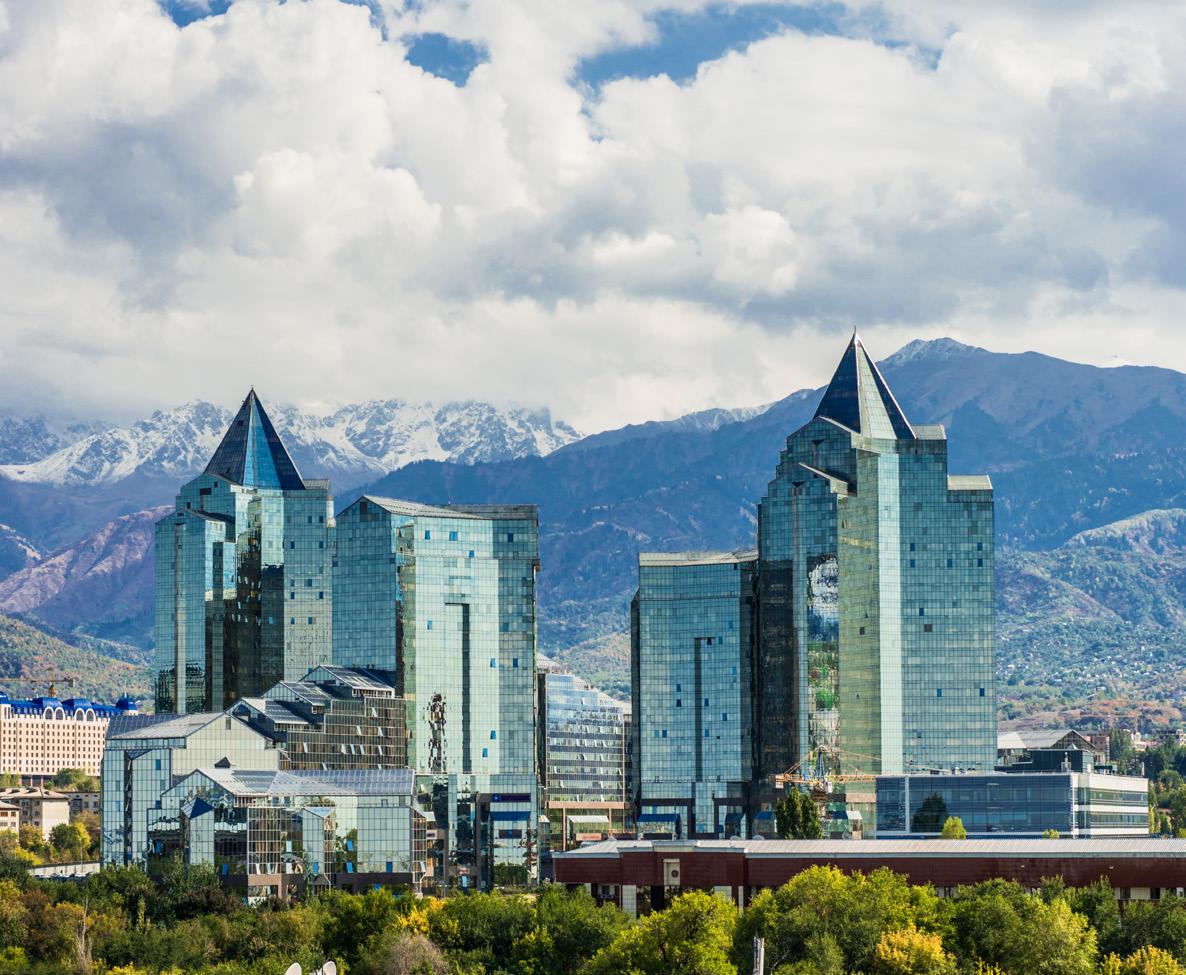
Kazakhstan was the land of the Saka and many other famous tribes – home of many glorious cities and nomadic empires in the past, as well as the scene of bloody and devasting wars. From its early beginnings, this large land in the middle of Eurasia lay at the junction of Silk Roads, and housed a multitude of cultures both sedentary and nomadic. By the 15th century the first Khanates appeared, hinting at the single political entity that the country would become. Kazakhstan presents a majestic landscape – high mountains, green valleys, lake-dotted steppe, western deserts and remote underground mosques … and affluent cities. Join us on a varied and unique journey – passing through the lands of the ancient residents of Kazakhstan, and tour wild steppes where nomads lived in harmony with nature.
After an overnight flight we arrive in Almaty and transfer to our hotel. After some time to recuperate from our overnight flight, we will regroup for lunch and an afternoon visit to Panfilov Park named in honour of small force of soldiers who were able to blunt the German attack on their approach to Moscow in November 1941. As well as the striking memorial, the Park includes several historical buildings including Zenkov Ascension Cathedral and the Museum of Folk Musical Instruments which we will discover during our visit.
This morning, we travel north-east to Altyn-Emel which lies at the foothills of the Jungar Alatau mountain range. Renowned for its natural beauty the park is also home to the famous Bes-shatyr archaeological complex which consists of Early Iron Age burial mounds dating back to the 1st millennium BCE. These remarkable structures belong to the Saka people who dominated the
Eurasian steppe, from the Black Sea to Siberia, c900-200BCE known through the writings of the ancient Greeks and Persians as fearsome warriors. Before returning to Almaty we will also visit Tamgaly-Tas with its enigmatic petroglyphs depicting Buddha and Burhans (Bodhisattvas) that are accompanied by Tibetan inscriptions.
We spend our morning in the mountains, a conservation area of outstanding beauty located very close to the city. We take the cable car up to Chimbulak to admire the Alpine scenery and Almaty Lake surrounded by giant conifers before returning to the city for lunch. Afterwards we shall visit the Central State Museum which contains one of the most impressive collections in the region and provides a great background to the country’s palaeontology and archaeology and the vast ethnographic sections go a long way to explain the culture of over a 100 ethnic groups residing in this country.
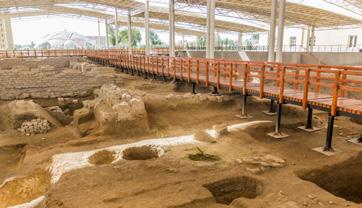
Today we leave Almaty and make the long journey to Taraz near the southern border of Uzbekistan. The journey will take most of the day, but we will make a visit to Tamgaly on route. This World Heritage site consists of an amazing assemblage of petroglyphs from the Bronze Age to the Middle Ages and some of the best examples of the rock art anywhere in the world. It is a real gallery of ancient art with around five thousand petroglyphs reflecting different aspects of life from the 2nd millennium BCE to early 20th century AD. We continue to Taraz, arriving in the evening.
In the morning, we visit the ruins of Akyrtas a site which forms part of the Serial World Heritage ‘Silk Roads. This is a unique walled settlement with extensive use of stone as a building material. Its origins are unknown, but it is probably the location of the palace of the Karluk Khans in the 8th to 10th centuries AD. In the afternoon we visit 2,000-year-
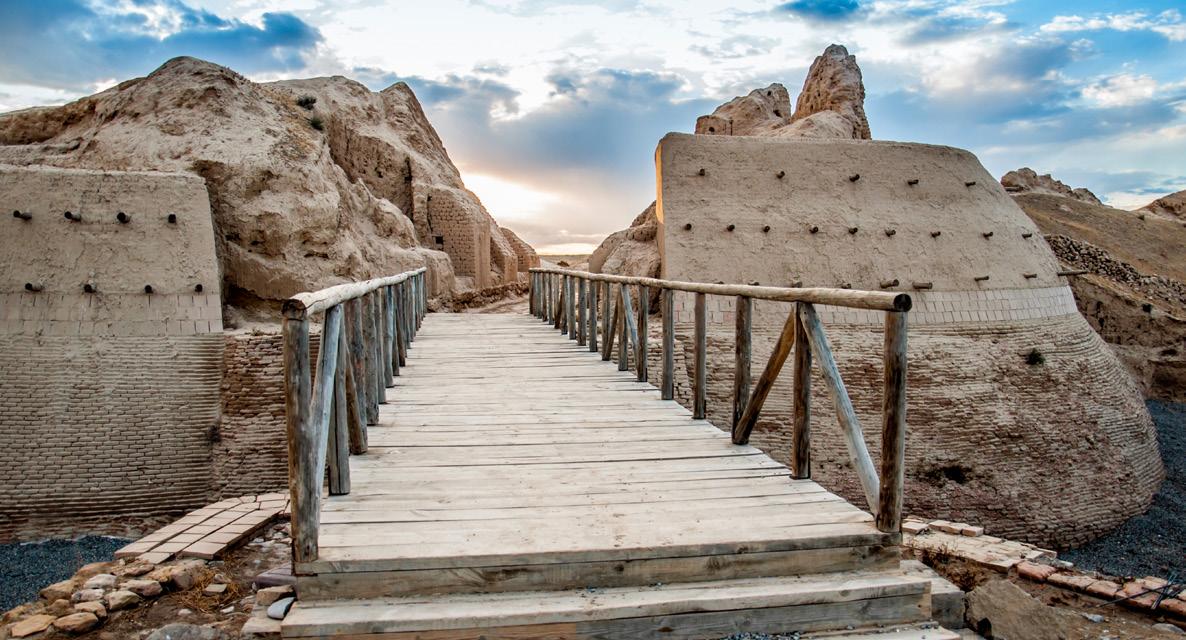
Discover the blue tiled wonder of the mausoleum of Khoja Ahmed Yasawi
View the thousands of petroglyphs decorating the rocks at Tamgaly from the Bronze and Iron Ages
Explore the dead city of Sauran, a former hub of the Silk Road which now stands alone amidst the Kazakh Steppe
old Taraz, another important Silk Road city, known as the city of merchants. In addition to the central remains of the medieval city, we will also view the heavily reconstructed caravanserai located on the outskirts and pay a visit to the City Museum
Day Seven | Shymkent
Our first site visit is to the evocative and architecturally important 12th century Aysha Bibi mausoleum, a small structure believed to be the tomb of 11 – 12th century noblewoman. Her identity is a mystery with no less than 28 different legends offering suggestions. We continue to Shymkent a city often associated with major dynasties of Central Asia. The regional museum provides a good review of that glorious past in and also in the South Kazakhstan region.
Day Eight | Shymkent - Otrar - Turkistan
Leaving Shymkent we make our way to Otrar
Once one of the great cities of the Silk Road the great mounds of the dead city stretch over a considerable area. This was where Tamerlane caught a chill and died on his way to conquer China in 1405. The site lies in the important transitional zone between the nomadic north and sedentary south and it’s a location with an exceptionally significant role to play in the understanding of Central Asian history. We spend most of our day here before continuing to Turkistan.
Day Nine | Turkistan
Today is dedicated to Turkistan city. This centre rose to prominence following the final demise of Otrar in the 16th and 17th centuries. There are several museums and interpretation centres and great remains of the medieval bathhouses and several other archaeological sites. They are all in a walking distance from each-other and will provide a nice and relaxing day, respite in our own caravan
across Kazakhstan. Our visits will also include the museum and the huge, blue-domed mausoleum commissioned by Tamerlane to cover the grave of the 11th century Sheikh Khoja Akhmet Yassawi. It resonates well with the grand scale of some of the major Timurid monuments in neighbouring Uzbekistan and the site was designated as a UNESCO World Heritage site in 2003.
Day Ten | Turkistan - Sauran - Kyzylorda
We travel north-east from the city into the vast steppe to the remains of Sauran. This vast metropolis was once the largest city in Kazakhstan. We pass through its still standing adobe walls to visit the ruins within. In addition to tangible remains of a glorious medieval city, there is also shows clear evidence for one of the most complex kyariz (underground canal) systems in the past. In the afternoon we move on Sygnac, another of these desert-bound ruins. Founded in the 4th century AD, destroyed by the Mongols, it too vanished into the dunes in the 17th century. From here we continue to Kyzylorda.
Day Eleven | Kyzylorda - Astana
This morning we take a flight to Astana, the new and shiny modern capital of Kazakhstan designed and built by some of the leading architects of the world. Situated in the vast steppe, the establishment of a city here seems almost an act of defiance against the constraints of nature.
After lunch we will visit the National Museum a purpose built multi-storey complex with 11 major halls and with display areas designed to impress. By far the largest museum of entire Central Asian region, it simply has a lot to see.
Day Twelve | Astana
We spend a full day exploring Astana. Among the many fascinating sites here, we will visit some of
YOUR EXPERT GUIDE
Dr Peter Brown
Dr Peter J Brown is an archaeologist specialising in the medieval world across Europe and Eurasia. He has worked on, and directed, a wide variety of archaeological field projects across the Middle East, Central Asia and China and has published on topics including water management, long distance trade, and the growth of cities during the medieval period. He has held research positions at universities and archaeological institutes in the UK, the Netherlands, China and Germany.

the key architectural landmarks such as the Bai Terek Observation Tower, the famous landmark of Kazakhstan; the Hezret Sultan Mosque with its huge dome and beautiful marble interior and the Pyramid Building (Palace of Peace and Harmony) designed by Sir Norman Foster.
Day Thirteen | Astana - London
This morning we have some free time before proceeding to the airport for our afternoon flight back to London.
YOUR COMPREHENSIVE EXPERT GUIDED TOUR INCLUDES
• Expert Guide Lecturer & Professional Tour Manager
• Entries to all sites as per the itinerary
• Field notes
• All taxes & gratuities
Included travel
• Return flights from London & all local transport Accommodation
• Accommodation in Almaty, Taraz, Shymkent, Turkistan, Kyzylorda & Astana
Culinary inclusions
• 12 breakfasts, 11 lunches & 11 dinners
• Water with all meals, tea or coffee with dinner
Dates & prices per person
Date Twin/Dbl Share SS
27th Sep - 9th Oct £4,995 £4,695 £480
Save £300pp with our 2025 Special Offer
For full details of this tour visit andantetravels.co.uk/akaz
From the Dacians to Dracula
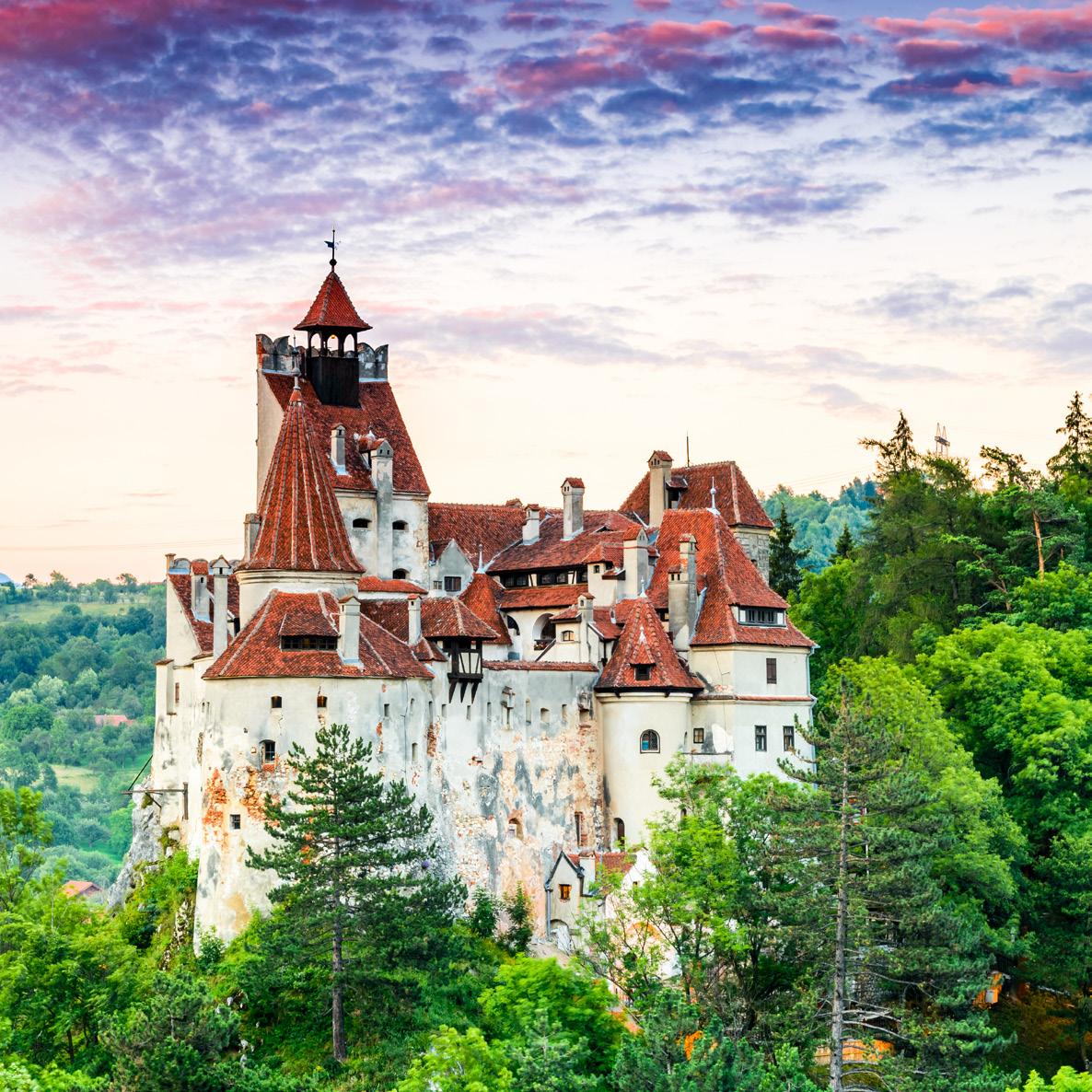
Romania offers a fascinating and under-explored historical narrative which is uncovered by its photogenic and diverse remains. Colonised in the Greek period and famously conquered in the Roman era under Trajan when it became the province of Dacia, Romania has retained a sense of its Classical identity. However, it is also a land of mysteries and legends played out in a backdrop of amazing Gothic castles and medieval cities. This is a unique tour covering Greek colonies, notably the ancient city of Tomis, on the Black Sea, the Roman ruins – including the victory monument at Adamclisi celebrating the Dacian Wars - as well as the world famous Bran Castle, home of Vlad Dracul. Piecing it all together is one of Andante’s most popular Guide Lecturers, Dr Doru Bogdan who provides in depth knowledge of his native country.
We fly to Bucharest from London and on arrival transfer to the city of Constanta.
We explore Constanta, the ancient city of Tomis, situated on the western coast of the Black Sea and famed for being the place the poet Ovid was exiled and from whence he wrote his famous Tristia. Here we see remains of a vast late antique complex which has retained colourful mosaics as well as
the National History and Archaeology Museum
The museum houses finds from all over Dobrogea, including the Neolithic statuettes known as the thinkers from the Hamagia culture, the Glykon Sphinx from the 2nd century AD., as well as the famous ‘Sculpture Treasury’. In the afternoon we visit Mangalia, a former Greek colony known as Callatis founded from Heraclea Pontica, where we see impressive archaic fortifications.
Today we explore Histria, first founded in the 7th century BC by Milesians and the largest excavation site in Romania. We spend all day here exploring the many layers of history of the sites, from the archaic periods to the late antique era. The highlights include the city walls, a bath complex and several Christian basilicas. There is also a site museum which displays artefacts from the city which demonstrate its importance in trade.
Day Four | Constanta - Adamclisi - Bucharest
We drive to Bucharest, via Adamclisi to see the Tropaeum Traiani, the triumphal monument erected by Trajan in 109 in celebration of his victory over the Dacians. After exploring the site of the monument, we visit the Adamclisi Museum in Bucharest which displays the vivid metopes which decorated the monument. Echoing Trajan’s column in Rome, the metopes depict scenes from the battle including Dacian bodies being thrown off a cliff and the suicide of Decebalus, the Dacian king. After lunch we transfer to Brasov.
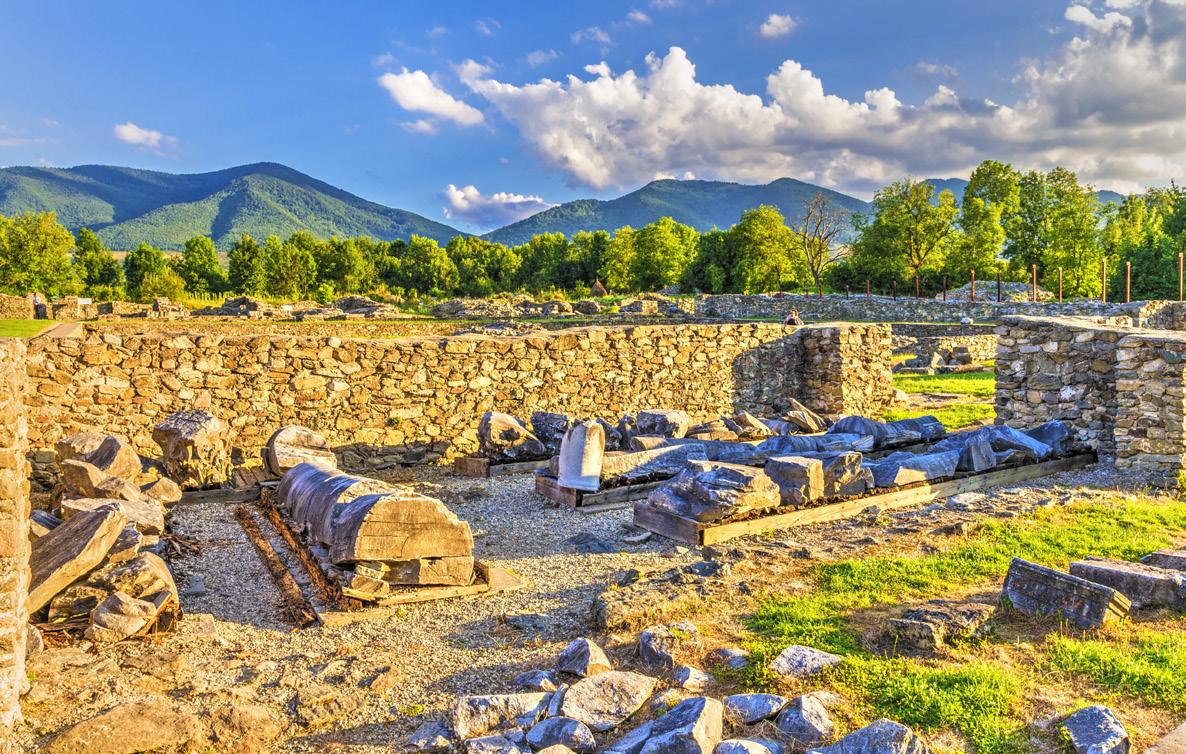
Adventure off road into the Transylvanian Mountains to the UNESCO sites of Sarmizegetusa Regia and Costesti
Investigate the ruins at Histria, ancient Milesian trading colony on the shores of the Black Sea
Discover the 15th century Gothic magnificence of Corvin Castle at Hunedoara
Day Five | Brasov – Bran - Hunedoara
We start our day in the Saxon Medieval town of Brasov where we will visit the Brasov County Museum of History before making the scenic drive to Bran Castle, on the borders of Wallachia. Now owned by the Hapsburgs, this 14th century castle was once a major frontier post between Wallachia and Transylvania. In the early part of the 20th century, it was home to Marie of Edinburgh, the last Queen of Romania whose furniture forms the basis of the museum housed in the castle. Popularly associated to Dracula, sadly there is no real evidence linking the castle to the well-known Vlad Dracul. Later, we drive to Hunedoara where we will be staying for the next two nights.
Day Six | Sarmizegetusa - Costesti - Orastie
On this is adventurous day, we take off-road vehicles from Orastie into the Transylvanian mountains to Sarmizegetusa Regia capital of the Dacian kingdom and home of Decebalus, the last king of Dacia who was defeated by Trajan in the Dacian Wars. Here we see a fortress made with imposing stone blocks, as well as a sacred zone which has a number of shrines, including a circular one which bears some resemblance to Stonehenge. After a picnic lunch we visit nearby Costesti, dating from the 1st century BC and one of the oldest Dacian forts in the area. On our return to Orastie we visit the Museum of Ethnography and Folk Art and afterwards transfer back to Hunedoara.
Day Seven | Hunedoara - CorvinSarmisegetuza - Sibiu
Our morning is spent at the striking 15th century
gothic Corvin Castle at Hunedoara, one of the largest castles in Europe. Before lunch we pay a brief visit to Densus Church, the oldest orthodox stone church in Romania. In the afternoon we visit Sarmizegetusa Ulpia Traiana , the capital of the Roman province located 40 kilometres away from the Dacian Sarmizegetusa and settled by veterans of the Dacian war just after its conclusion. Here we see elements typical to any Roman city, such as baths, an amphitheatre and a forum, as well as a number of temples, including one to Mithras.
Day Eight | Sibiu - Bucharest
Today we explore Sibiu, founded by Saxon settlers and explore the old town and visit Bruckenthal Palace, home to one of Romania’s oldest museums. After lunch in a local restaurant we transfer ot Bucharest.
Nine | Bucharest
Today we spend all day in the capital Bucharest, exploring the country’s past. We start with the National Museum of Romanian History which houses artefacts dating throughout the history of the country. Perhaps the most important finds are the wonderfully crafted Dacian gold work, including the Golden Helmet of Coţofeneşti and bracelets which were used as currency as well as display. We proceed to the Old Town where a number of 15th century churches remain in use. Later we transfer to the northern part of Bucharest to visit the Village Museum of Romanian Ethnography.
We transfer to the airport in Bucharest for our afternoon flight back to London.
Dr Doru Bogdan
A researcher and lecturer at theUniversity of Alba Iulia in Romania, Doru is a specialist in Roman archaeology and has also supervised an array of fascinating excavations.

• Expert Guide Lecturer & Professional Tour Manager
• Entries to all sites as per the itinerary
• Field notes
• All taxes & gratuities
Included travel
• Return flights from London & all local transport Accommodation
• Accommodation in Constanta, Brasov, Hunedoara, Sibiu & Bucharest
Culinary inclusions
• 9 breakfasts, 8 lunches & 9 dinners
• Water with all meals, wine & tea or coffee with dinner
Dates & prices per person
Date Twin/Dbl Share SS
13th - 22nd Sep £4,745 £495
27th Sep - 6th Oct* £4,645 £4,345 £495
Save £300pp with our 2025 Special Offer
For full details of this tour visit andantetravels.co.uk/armn
9 DAYS FROM £3,195pp
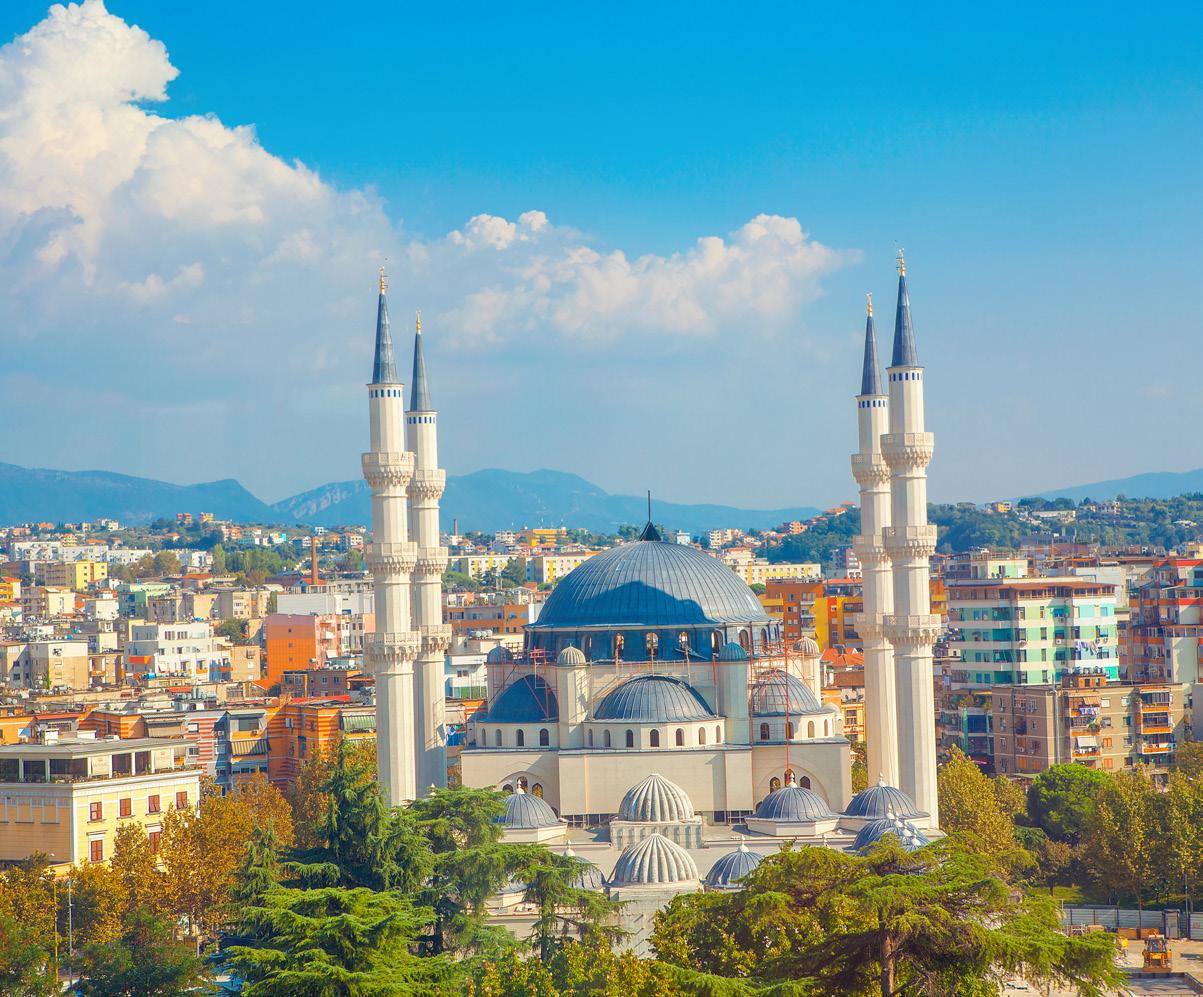
Geographically, and for 50 years culturally isolated during the post-war Stalinist regime, Albania is unlike any other country in Europe. Homeric landscapes, for the most part undisturbed by modern life, hold ruinous Classical cities which once vied in splendour with their neighbours in Greece and Italy. Greek coastal colonisation provided new stimulus to the native population, and recent excavations of their Illyrian hilltop cities, such as Byllis, have revealed the successful absorption of Hellenistic architectural ideas in their planned layout.
Albania holds an array of splendours set in a dramatic scenery of mountains, deep blue seas and wide plains but perhaps the most important element of this tour is Oliver Gilkes, who started working here just after the fall of the old regime. During his 30 years excavating in this fascinating country, he has witnessed at first-hand how Albania has struggled to assert its newfound freedom. His observations add interest and depth to our study of this land in ancient times. Having trained many Albanian students on the dig at Butrint, he is a well-known and well-loved figure here and the best guide to the archaeology of this country.
We fly from London to Tirana and transfer to our hotel.
We spend the morning in in Albania’s lively capital, Tirana and explore the city centre, a microcosm of Albania’s modern history. We visit the Ethen Bay Mosque and the National Historical Museum which contains a large section on prehistory, including Neolithic painted pottery, weapons and jewellery from Bronze and Iron Age and Illyrian tombs, some of the best finds of sculpture, mosaics, pottery and figurines from Illyrian and classical sites. In the afternoon we head to the outskirts of the city where we explore Bunkart 1, an enormous bunker intended as a nuclear shelter for
Enver Hoxha and his inner circle. Now a converted into a museum and art centre, exhibits explore aspects of life under communist rule.
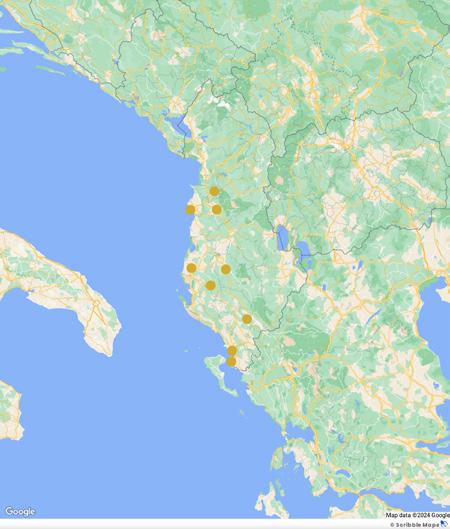
Today we drive to Apollonia Archaeological Park, site of the colony founded by the Corinthians in 588BC, and one of the most important Greek cities on the Adriatic, the ruins of which cover an enormous area. Today the excavated remains are surrounded by olive and oak trees with grassy banks hinting at what may still lie buried underneath, while the evocative Byzantine monastery is now a museum. This afternoon, we drive along the ‘Mountains of Thunder’ down the beautiful Ionian coast, stopping for lunch in Vlora. We arrive in Saranda early this evening.
of the most striking in the Mediterranean and our guide lecturer Oliver Gilkes has directed excavations here for many years. The city lies in suggestive woodlands and contains remarkable monuments of all periods. After a picnic lunch at Butrint Castle, we visit the museum, before walking down to catch the ferry across the Vivari Channel. Here we will explore the Venetian Triangular Fortress.
Day Five | Saranda - Gjirokastra
Today we leave the Ionian and cross the mountains to arrive in Gjirokastra. This amazing Ottoman city

Uncover a story of the discovery of 2,000 years of untouched archaeological heritage
Spend a full day at the World Heritage Site of Butrint
Enjoy fantastic scenery, mountains, valleys and the dramatic Albanian Riviera
Join Oliver Gilkes, a well-known and well-loved figure, having trained many Albanian students and the best guide to the archaeology of this country
is also a UNESCO World Heritage Site, and we shall have the chance to visit the Gjirokastra Museum, the medieval Fortress and the National Museum of Arms. This afternoon we enjoy a special visit to the late Ottoman mansion, Zekate House. Built in 1812, Zekate is widely considered to be one of the grandest examples of its kind, providing us with amazing an insight into the upper echelons of Ottoman life.
We head northwards and long the valley of the mighty river Vjosa round to the ruins of Byllis According to legend, the city was founded by warriors led by Neoptolemus, the son of Achilles returning from the Trojan wars. Archaeologists have yet to find evidence of Homeric heroes but have uncovered a Hellenistic era stadium, theatre. We head northwards and long the valley of the mighty river Vjosa round to the ruins of Byllis. According to legend, the city was founded by warriors led by Neoptolemus, the son of Achilles returning from the Trojan wars. Archaeologists have yet to find evidence of Homeric heroes but have uncovered a Hellenistic era stadium, theatre and fortifications as well as numerous later Roman churches. After lunch, we will visit the excavated Byllis Cathedral, before continuing onwards to Berat and enjoy dinner at our hotel.
Today we shift from classical to medieval times and focus on the attractive town of Berat, which is brimming with traditional architecture. The lower city along the riversides was the preserve of the Muslim inhabitants, while by agreement the Christians held the citadel. Here we will explore Byzantine churches, Ottoman mosques, and the Onufri Museum, home to a spectacular collection of 16th century religious artwork.
We visit Durres, Albania’s chief port and the starting point of the Via Egnatia. This was ancient Dyrrachium a great imperial port on the Adriatic. Here we visit the 2nd century amphitheatre, the largest in the Balkans, as well as sections of the mighty walls. After lunch we continue to Kruja, the mountain fortress of the Kastrioti family, and home of the National hero George Kastrioti Skanderbeg. We visit the Skanderbeg Museum and wander through the Ottoman bazaar. An eclectic last day to truly represent the many ages and influences of Albania.
This morning, we transfer from Kruja to the airport for our return flight to London.
YOUR EXPERT GUIDE
Oliver Gilkes
One of our longest-standing Guide Lecturers, Oliver has worked as a field and museum archaeologist in the UK, Albania and Italy. Oliver is still involved in projects in Albania and is considered one of just a handful of experts on Albanian archaeology in the UK.

YOUR COMPREHENSIVE EXPERT GUIDED TOUR INCLUDES
• Expert Guide Lecturer & Professional Tour Manager
• Entries to all sites as per the itinerary
• Field notes
• All taxes & gratuities
Included travel
• Return flights from London & all local transport Accommodation
• Accommodation in Tirana, Saranda, Gjirokastra, Berat & Kruje
Culinary inclusions
• 8 breakfasts, 7 lunches & 8 dinners
• Water with all meals, wine & tea or coffee with dinner
Dates & prices per person
Date Twin/Dbl Share SS 4th - 12th Oct £3,445
£3,195 £455
Save £250pp with our 2025 Special Offer
For full details of this tour visit andantetravels.co.uk/aala
8 DAYS FROM £3,245pp

Pompeii has fascinated us for centuries, but archaeological interest isn’t confined to this one area. On this tour, we go beyond the sites of the regular tourist trail and discover more. We explore the hinterland of Vesuvius, a land of myth and legend and, paradoxically, a land of luxury and wealth dotted with the vast villas of senators. The city of Pozzuoli was a ‘second Rome’ in the summer season. The excesses of fine living here were satirised in the Satyricon of Petronius.
We are based for a whole week in just one comfortable hotel in Naples, the living embodiment of a classical city. Resplendent and ramshackle, Naples is bursting at the seams with life and passion.
We fly to Naples and transfer to our hotel.
Today we drive a few kilometres north to Santa Maria Capua Vetere, an important city in antiquity and one associated with two famous historical leaders: Hannibal and Spartacus. It was also the focus of Cicero’s ire on many occasions when he described the colony as treacherous to Rome. We start at the Museo Archaelogico dell’Antica
Capua where we see finds that retrace the history of the city. We continue with the well-preserved amphitheatre, the site of the first school of gladiators and the starting point of the third slave rebellion, led by the gladiator Spartacus. In the afternoon we will visit the Museo Campano with its amazing display of goddesses and the Church of Sant’Angelo in Formis which stands on the remains of a temple dedicated to Diana before returning to Naples.
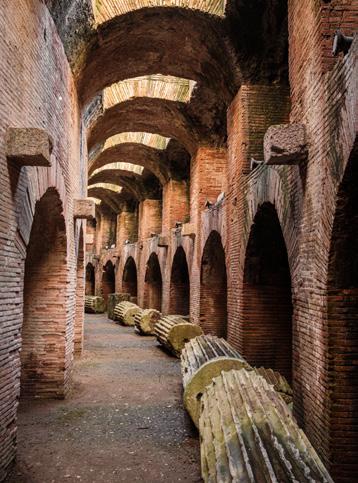
John Shepherd

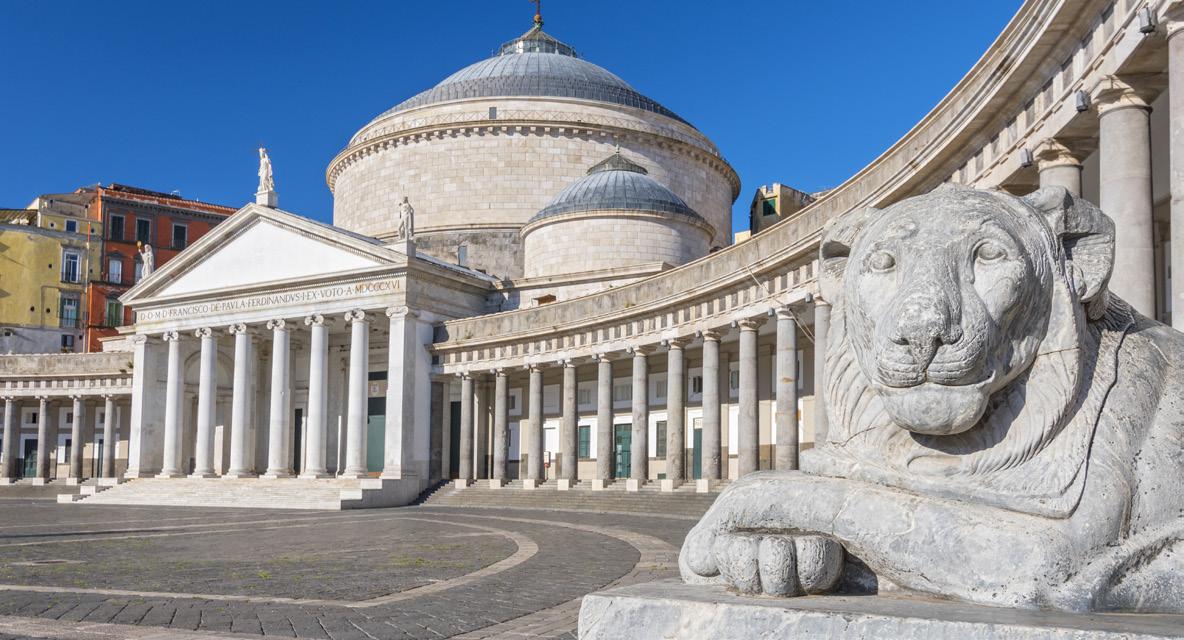
Explore the playground of the Roman elite, buildings created at the height of Imperial indulgence and excess
Discover the now subterranean thermal complex at Baia by glass bottomed boat
Descend underground into the catacombs and remnants of the ancient city below the streets of Naples
Enjoy ancient Capua and its connection to the famous Thracian gladiator and escaped slave, Spartacus
Our first visit today is to the hillside site of Cumae, where one of the oldest Greek colonies was founded in 750 BCE. Here we explore the Archaeological Park starting with the Antro della Sibilla the place attributed to Virgil’s famous prophetess of ancient legend—the Cumaean Sibyl. We continue to Pozzouli where we spend the rest of our day discovering this important ancient port. For several centuries almost all of the grain was imported for the city of Rome itself, coming especially from Sicily, North Africa (Tunisia) and Egypt. It was also a centre for the import trade from the eastern Mediterranean. In turn, it exported a wide range of Italian products – wine, olive oil, pottery, utilitarian bronze vessels made in Capua and iron tools forged in Puteoli.
We spend the day in Naples, beginning with the Duomo. There are remnants of the ancient city everywhere beneath the modern streets - the foundations of the theatre will be visited, as will the Roman streets and shops beneath the Church of San Lorenzo Maggiore. We visit the cloister of Santa Chiara, covered with fabulous maiolica tiles. We visit the small archaeological museum which contains items from the church but, more importantly, gives access to the site of a Roman bathhouse from the 1st century AD. Here you can see the extensive remains of hot and cold bathing areas, changing rooms and a swimming pool.
This morning we visit the Catacombs of St. Januarius, named after the patron saint of Naples. The burial place of the early bishops of Naples, including Saint Agrippinus, the catacombs contain
excellent examples of palaeochristian art. After we visit ‘Virgil’s tomb’ - ancient historians tell us that this inscription adorned his tomb: ‘Mantua bore me, Calabria snatched me away, Parthenope now possesses me: I sang of pastures, fields and heroes’ - and he is known to have been buried in Naples. This tomb does not bear this inscription - but a visit makes an interesting discussion! We continue from here to Naples Archaeological Museum packed with the best wall paintings and delicate artefacts from everyday life. Exquisite metalwork which would normally have been melted and recycled; marble statues which would have been broken up to make lime; wall paintings which would have been decayed or plastered over – all these would have been lost had Vesuvius not buried them all. The museum has now expanded, recently opening its western wing after a decade-long renovation project.
Today we take a walk amongst some of Naples’ most grandiose buildings including the Palazzo Reale, built for the King of Spain, and home to the Bourbon kings who first began to ‘excavate’ the site of Herculaneum – i.e. digging tunnels and removing material from the site. We continue past the Castel Dell’Ovo (the ‘egg castle so-called after a Virgilian legend) and the Teatro San Carlo, the oldest continuously active venue for public opera in Europe. There will be some free time today before regrouping for dinner this evening.
We continue to the huge thermal bathing establishment at Baia, now part of a marine protected Archaeological Park. Baia’s therapeutic springs and mild climate made it the most famous
John Shepherd is an archaeologist who has worked extensively in Europe, for example, Italy, France and Bulgaria. He is a specialist in the study of ancient glass. Much of John’s career has been focused on Roman provincial archaeology, working at the Museum of London for over 20 years. He published Professor W F Grimes’s post-war excavations on the London Temple of Mithras and the Cripplegate Roman Fort and also established the Museum’s Archaeological Archive and Research Centre. He left the Museum in 2004 to work more closely with developing the use of museum archaeological collections in universities and schools, as well as teaching at the Highgate Literary and Scientific Institute on various aspects of European archaeology.
spa in Italy, and Sulla, Pompey, Cicero, Julius Caesar, Tiberius and Nero all had luxurious holiday villas here.
Today the ancient remains of Baia can be viewed through glass-bottomed boats. In the afternoon we visit Misenum the main Roman naval base until the end of the Empire in the west. It was here that the admiral of the fleet, the elder Pliny, was stationed when Vesuvius erupted in AD 79.
Day Eight | Naples – London
We return to Naples airport for our flight home.
YOUR COMPREHENSIVE EXPERT GUIDED TOUR INCLUDES
• Expert Guide Lecturer & Professional Tour Manager
• Entries to all sites as per the itinerary
• Field notes
• All taxes & gratuities
Included travel
• Return flights from London & all local transport
Accommodation
• Accommodation in Naples
Culinary inclusions
• 7 breakfasts, 6 lunches & 7 dinners
• Water with all meals, wine and tea or coffee with dinner
Dates & prices per person
Date Twin/Dbl Share SS 13th - 20th Oct £3,495 £3,245 £695
Save £250pp with our 2025 Special Offer
For full details of this tour visit andantetravels.co.uk/acpo
Unravel a complex web of early civilisations
8 DAYS FROM £3,245pp
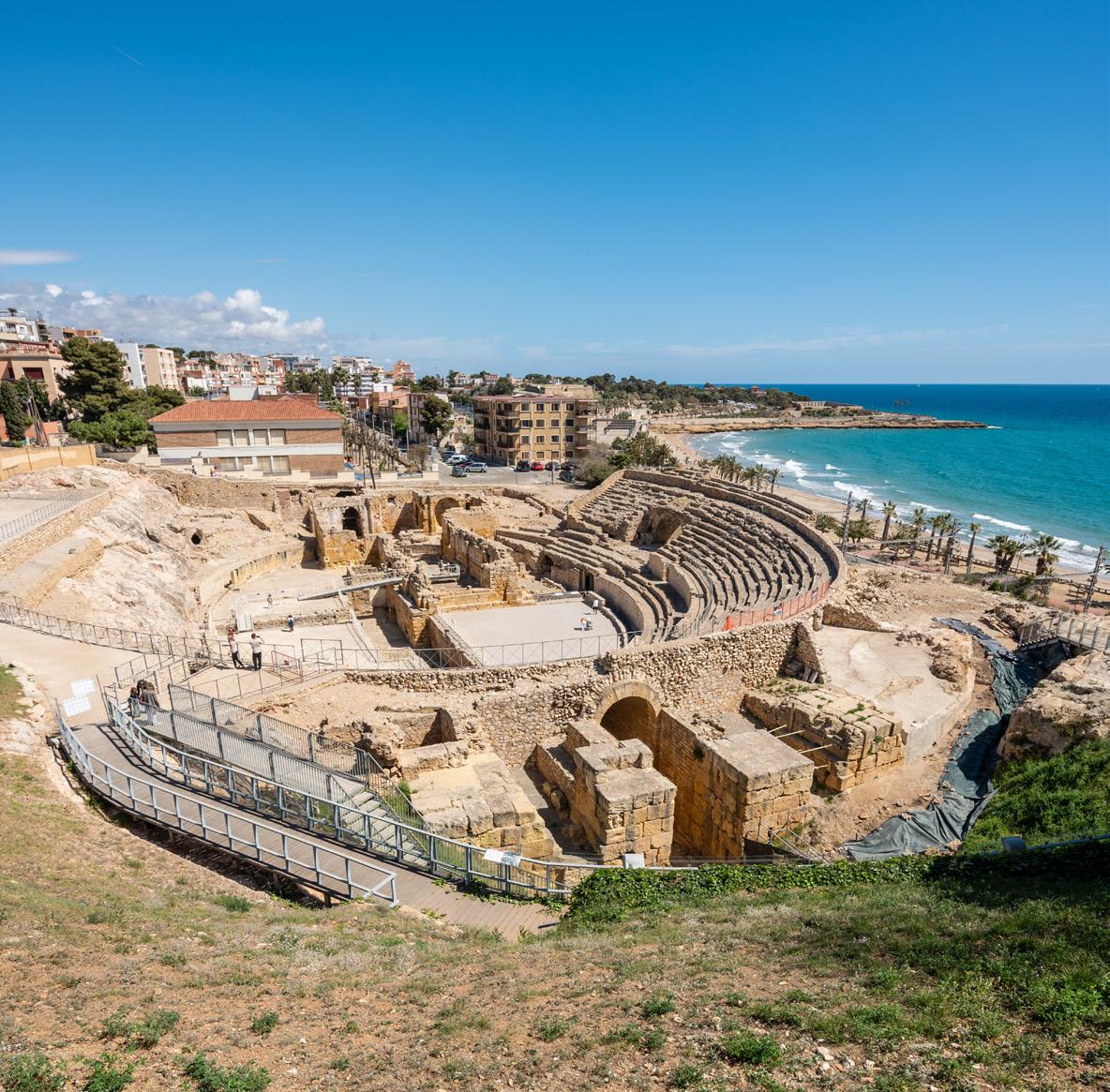
The coastline of Catalonia has been a busy place since the 7th century BCE when the first traders settled here. The discoveries at the ancient city of Empuries – “the trading post” –make plain just how cosmopolitan ancient Catalonia became as a result of Mediterranean trade – faience from Egypt, black pottery from Etruria, holy statues from Carthage, fine metal work from the Gauls and the distinctive black and red pottery of Archaic Greece. And, just a few miles inland, behind the bustle of the ports and harbours, lies a landscape apart and forgotten. In the peace of the interior lie medieval towns and quiet abbeys amongst the rolling vine-clad hills and winding rivers of Catalonia.
We explore remote indigenous Iberian strongholds such as Ullastret and Olerdola to the superb coastal site of Emporion (“the market”) and the Roman walls of Barcino and Tarraco in and under and through the buildings of the attractive modern towns of Barcelona and Tarragona.
We fly from London to Barcelona and travel south to our hotel in Tarragona.
Today is devoted to Roman Tarraco (Tarragona), a UNESCO World Heritage site and the oldest Roman settlement on the Iberian Peninsula, established in the 3rd century BCE. The archaeological
ensemble here is one of the earliest and most comprehensive examples of Roman city planning in the Mediterranean region. We will follow part of the circuit of the town walls and visit the provincial and colonial forums, the amphitheatre and the impressive circus. Our final visit is to the fabulous 12th-century Cathedral built on the site where the Temple of Augustus used to stand.
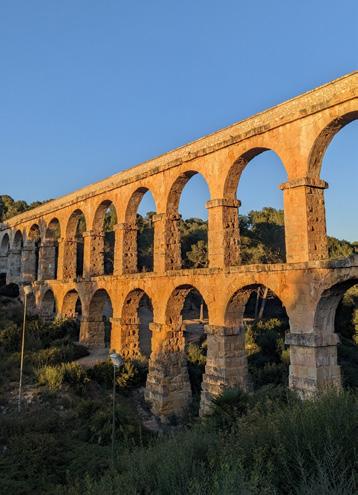
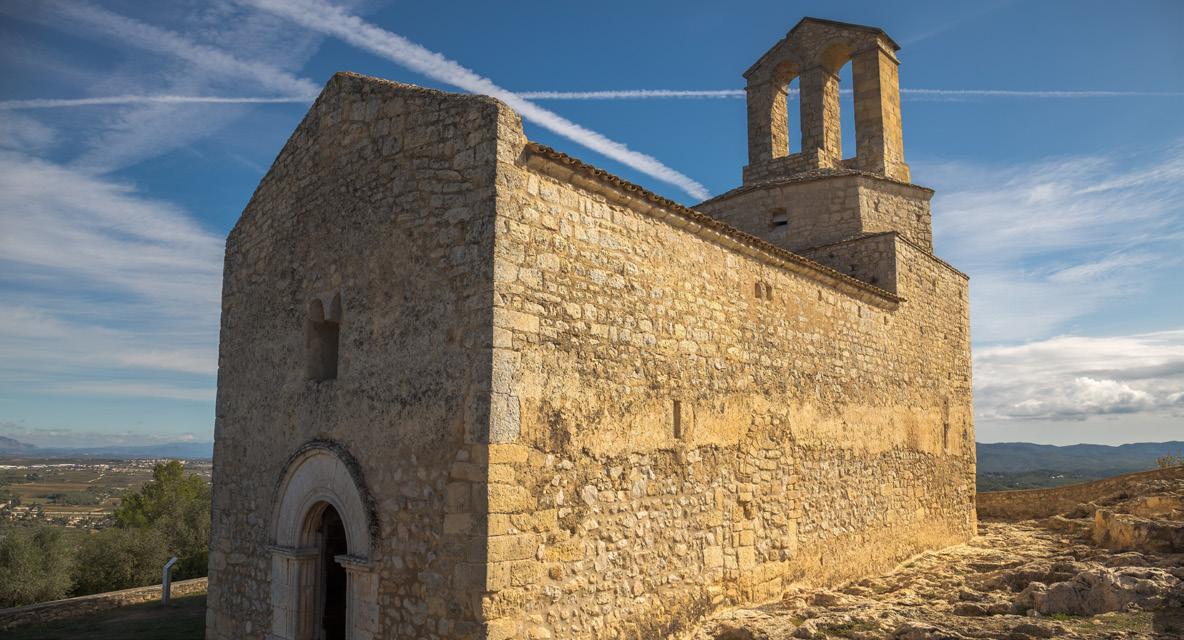
Explore the charming coastal town of Tarragona, once the capital of Hispania Tarraconensis
Tread the roads of Iron Age Ullastret, a town which once traded with the Etruscans, Greeks and Carthaginians
Discover Girona, known as the ‘City of the Four Rivers’, its historic quarter dominated by medieval buildings and Roman, Arab and Hebrew influences
This morning, we visit another UNESCO World Heritage site – the rock art complex of the Sierra de Godall where depictions of animals and hunting scenes are distributed across the various shelters of the cliffs. After lunch, we visit the ancient site of Tivissa, an Iberian settlement dating from the 3rd century BCE which once controlled trade between the coast and the interior, along the course of the river Ebro. Our last site of the day is the Roman Villa of Centelles to see its marvellous polychrome dome mosaic depicting Christian themes.
We start our day at the Palaeo Christian necropolis in Tarragona. Over 2,000 graves have been found providing a wealth of information about the people who lived here in the 3rd century AD. We continue to the excavations of ‘El Munts’ a large Roman villa site situated on a hillside overlooking the coast near Altafulla. This wealthy residence boasted at least two storeys and a large interior courtyard with a fishpond in the middle. This afternoon we travel a few miles out of the city to see the Roman quarry at Mèdol. Many of the walls from which the blocks of stone were extracted are still visible. We finish our day at the magnificent Ferreres Aqueduct, also known as the Pont del Diable.
We leave Tarragona today and head north stopping at Olerdola, a rural site where the church of St. Miquel was built in an early medieval fortress overlying earlier Roman buildings. After lunch, we visit the Catalan Museum of Archaeology in Barcelona where we see the finds from Tivissa along with many other wonderful artefacts. We will also visit the History Museum which contains the underground excavations of the Roman city of Barcino.
Today we visit Girona, once ancient Geruna and a town of the Ausetani tribe, which survived to prosper in the Roman period. We walk around the town walls and visit the cathedral with its famous 11th-century tapestry of the creation. Later we visit the Museu Arqueologic de Sant Pere de Galligants housed in a delightful 11th-century Romanesque monastery. Returning to our hotel in the late afternoon, we make a stop at Peratallada, a medieval village, that has kept its original aspect with narrow streets, fortified castle and deep moat.
Day Seven | Empuries & Ullastret
This morning we drive to the coastal trading colony and tripartite site of Empuries, which was colonised by Iberian, Greek and Roman settlers. Remains at the site include the ruins of the Greek market and port, an ancient necropolis and the Roman-era walls, mosaics, amphitheatre and early Christian basilica. In the afternoon, we visit the Iron Age settlement of Ullastret, a fascinating early town, developed by the local Iberian tribe of the Indiketes and influenced by the Greek settlers on the coast.
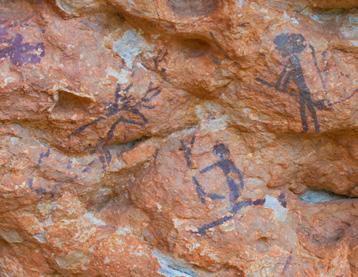
YOUR EXPERT GUIDE
Dr Doru Bogdan
A researcher and lecturer at the University of Alba Iulia in Romania, Dr Doru Bogdan is a specialist in Roman archaeology. He has supervised excavations in Cartnumun (Austria), Pompeii (Italy), Catalhöyük (Turkey) and Birdoswald (UK). He also directed numerous archaeological excavations and research projects in Transylvania and the Lower Danube/Black Sea area of Dobrudja.

Day Eight | Callela de Palafrugell – Barcelona
- London
We drive to Barcelona Airport for our return flight to London.
YOUR COMPREHENSIVE EXPERT GUIDED TOUR INCLUDES
• Expert Guide Lecturer & Professional Tour Manager
• Entries to all sites as per the itinerary
• Field notes
• All taxes & gratuities
Included travel
• Return flights from London & all local transport Accommodation
• Accommodation in Tarragona & Callela de Palafrugell
Culinary inclusions
• 7 breakfasts, 6 lunches & 7 dinners
• Water with all meals, wine & tea or coffee with dinner
Dates & prices per person
Date Twin/Dbl Share SS 27th Oct - 3rd Nov
£3,495 £3,245 £380
Save £250pp with our 2025 Special Offer
For full details of this tour visit andantetravels.co.uk/arsc
The Land of Ta Shemau
12 DAYS FROM £8,245pp
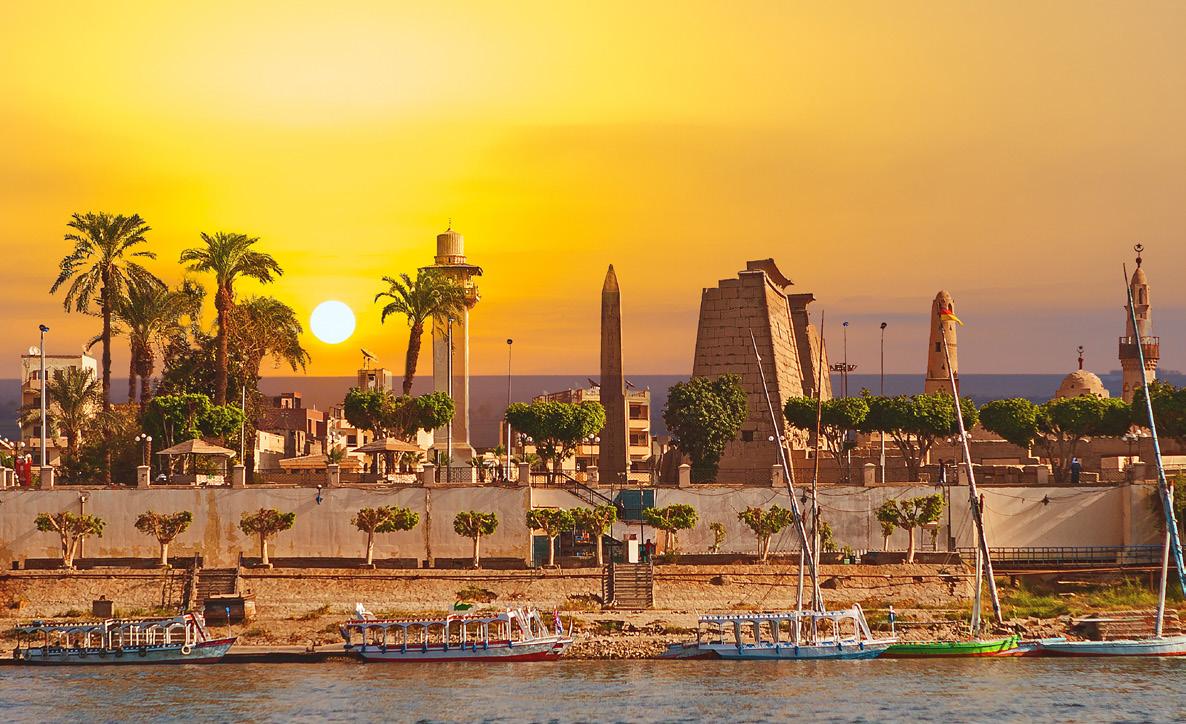
Upper Egypt, known historically as “Ta Shemau” or “The Land of Reeds,” stretches south from modern Cairo to Aswan. This region defined by the Nile River, with fertile green banks contrasting dramatically with the desert beyond, holds the greatest concentration of ancient monuments in Egypt. This specialized journey through Upper Egypt combines some of these most celebrated monuments with less common archaeological treasures offering perspectives beyond the typical tourist route. Travelling between Esna and Aswan in a traditional dahabiya, we are able to access several sites which are inaccessible by bigger boats and enjoy the slow pace and wonderful scenes of life on the river at close hand.
We fly from London to Luxor and transfer to our hotel.
This morning we start by exploring the largest temple complex in Egypt, and some have argued, the largest religious complex in the world –the fabulous site of Karnak. In addition to its religious significance, it also served as a treasury, administrative centre, and palace for the New Kingdom pharaohs. Added to by generation after generation of pharaohs over a period of 1,500 years, it’s a dazzling maze of monumental gateways, obelisks, pillared halls and subsidiary shrines. From Hatshepsut, Seti I and Rameses II to the Ptolemies, Romans, and early Christians; all have left their mark here. After lunch we visit Luxor Museum and discover its fabulous collection of Egyptian artefacts.
Our focus today is on the Valley of the Kings. Here on the west bank is the necropolis area reserved for royal burials from around 2100 BCE, but it was the Pharaohs of the later New Kingdom period, who chose these once remote desert valley sites for their grand rock-cut tombs. Of over 60 tombs discovered in the Valley of the Kings, only a small number are open to the public and we visit a selection – the famous Tomb of Tutankhamun, the elaborately decorated Tomb of Seti I, which details the opening of the mouth ceremony and the rarely visited Tomb of Ay, tucked away in the West branch known as the Valley of the Monkeys.
The tomb is decorated with scenes of the Pharaoh hunting for a birds and hippopotamus in the marshes, a highly unusual depiction for a royal tomb. We have also obtained a special permit to enter the Tomb of Amenhotep III which has recently been undergoing restoration.
This morning we explore the Memorial Temple of Hatshepsut at Deir el-Bahri, cradled by the dramatic natural sculptures of the neighbouring cliffs. The site is often regarded as one of the most spectacular and beautiful in Egypt although the temple to which visitors now come, is not the first on the site, nor is it entirely original in its architecture! Afterwards we make our way to Medinet Habu, arguably the best-preserved temple of the New Kingdom, filled as it is with a wealth of exemplary paintings, carvings and sculptures. Nearby we discover the seldom visited Qasr El Aguz, where there is a small temple dedicated to Thoth. After lunch we visit the Ramesseum, with its fallen colossus of Ramesses II, an astounding testament to the Pharaohs reign – and the inspiration behind Percy Bysshe Shelley’s masterpiece ‘Ozymandias’. Our final visit of the day is to the Colossi of Memnon, two enormous statues of 18th Dynasty Pharaoh Amenhotep III which captivated the imaginations of curious travellers for millennia.
We leave Luxor today and drive south to Esna. Here we explore the Temple of Esna (also known as the Temple of Khnum) dedicated to the ram-headed
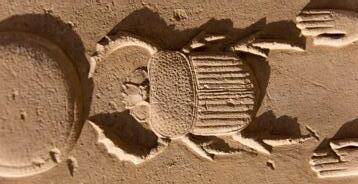
Khnum, along with other deities including Neith and Heka. One of the few major surviving temples of the Graeco-Roman Period, the temple rests in a remarkable 9 metre deep depression, the result of 1,500 years of accumulated desert sand. Whilst the visible structure is impressive, it represents only a fraction of the original temple, which rivalled the grand temples of Edfu and Dendarah in scale. After our site visit, we embark on our Dahabiya private charter.
Day Six | Esna - El Kab - Edfu
Taking advantage of our small, flat-bottomed Dahabiya, we moor at El Kab and make our way up to the row of tombs which line the ridge above the village. The tombs here are carved with important texts referring to the naval battles on the Nile between Egyptian forces from the city of Thebes and the invading Hyksos armies from the Near East. We continue to Edfu, a beautiful Ptolemaic temple dedicated to Horus, the avenging falcon god. This is one of Egypt’s best-preserved ancient monuments built on top of much older ruins dating back to Ramses III. The temple embodies the traditional architecture of ancient Egypt and is largely free of Hellenistic influence and several of the inscriptions found describe what is known as the “Sacred Drama.” The story describes the conflict between Horus and Seth, as Horus seeks revenge for the murder of his father, Osiris.
Day Seven | Edfu – Aswan
We sail to Aswan stopping at two key sites along the river. The first is Gebel el-Silsila, a site rich in tombs and shrines where we find evidence for
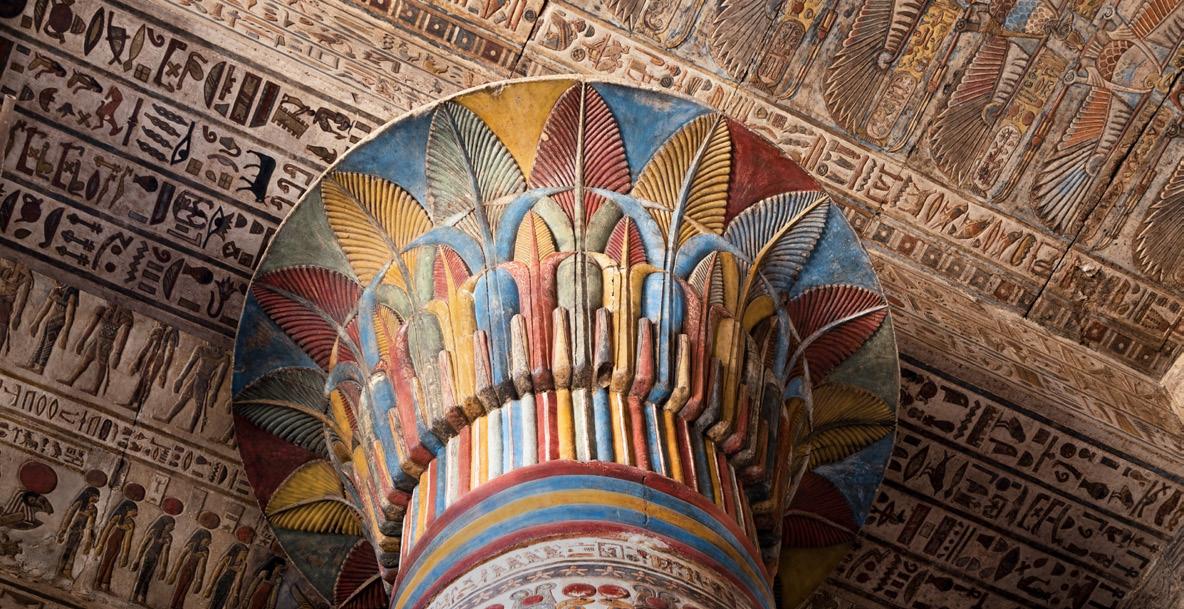
Discover the ‘Valley of the Monkeys’ and the Tomb of Ay noted for its scenes of hunting in the marshes
Enjoy special access to the Tomb of Amenhotep III, a huge tomb in a secluded part of the Valley of the Kings
Explore Sehel Island where we find some of the earliest and best-preserved examples of ancient Egyptian writing Travel in a traditional dahabiya, much as Victorian explorers did over a century ago
ancient quarrying. The highlight here is a rock-cut temple known as the ‘Speos of Horemheb’. Next, we explore the partially restored remains of Kom Ombo’s Ptolemaic temple standing dramatically above the Nile. The situation of this temple, overlooking the river, is particularly picturesque and peculiar in its double dedication, reflected in its perfectly symmetrical layout. The eastern half of the temple was dedicated to the crocodile god Sobek, his wife Hathor, and their son Khonsu. The western half of the temple was dedicated to the falcon god Horus, his wife Tasenetnofret, and their son Panebtawy.
An early start this morning as we fly to the worldrenowned Nubian site at Abu Simbel, 140 miles south-west of Aswan. Miraculously rescued from Lake Nasser’s rising waters after the creation of the High Dam and rebuilt on the western bank, the two massive rock temples of Ramesses II and his favourite queen, Nefertari, were originally carved into the mountainside in 1244 BCE to honour the deified royal pair and to awe the Nubians. In an effort to prevent the temples’ destruction, UNESCO embarked on its first-ever collaborative international rescue effort. This later became the catalyst for a World Heritage list that would help protect and promote over a thousand significant cultural and natural sites around the globe.
Day Nine | Aswan
Today starts with a visit to the Quarries at Aswan, famous as the source of pink granite which was widely used in many pharaonic monuments. We see the spectacular ‘Unfinished Obelisk; had it been successfully removed from its site it would have been the largest such obelisk ever quarried. From here we continue to the atmospheric ruins of Philae, the Ptolemaic Island temple, a labyrinthine complex of chapels and shrines –
which were originally dedicated to the goddess Isis – this was the Byzantine Empire’s last bastion of paganism. To nineteenth century travellers Philae was ‘the pearl of the Nile’ set on its own island, with just enough vegetation to make this the archetypal romantic ruin. Our last site visit of the day is to the High Dam
We climb the steep stairway to the Necropolis of Qubbet el-Hawa (‘Dome of the Winds’) this morning where we are rewarded by the Old and Middle Kingdom tombs of some of the prominent governors, household staff and officials of the southernmost region of Egypt. Later we discover Sehel Island where there are thousands of inscriptions left by ancient travellers and in the afternoon we explore Elephantine Island, the location of the ancient town and temple in Aswan. This was the cult place of the ram-headed god Khnum, a creator god associated with the Nile and the first cataract and potters. We will explore the remains of the temples of Khnum and Satet, and their associated Nileometers (for measuring the Nile flood levels). At the end of the day, we take an evening flight to Cairo.
We spend our morning at the Grand Egyptian Museum which sits on the edge of the Giza plateau with the pyramids within view. A huge undertaking which started over 20 years ago, the Museum boasts over 750,000 sqm in floor size, 12 exhibition halls and thousands on thousands of artefacts. Costing nearly a billion dollars in its creation, this is the biggest Museum in the world. After lunch we enjoy a visit to the Egyptian Museum in Tharir Square, the oldest archaeological museum in the Middle East which still houses the largest collection of Pharaonic antiquities in the world, displaying extensive collections spanning
Prof. Paul Nicholson

Prof. Paul Nicholson is Professor Emeritus of Egyptian Archaeology at Cardiff University with many years of field experience having directed excavations in Egypt at sites such as Tell el-Amarna, Memphis, and Saqqara, as well as working with colleagues at sites such as Hatnub and Berenike. His research interests include ancient technology, sacred animal cults and the uses and history of photography in archaeology and Egyptology. He is co-editor (with Ian Shaw) of Ancient Egyptian Materials and Technology (2000), and author of Brilliant Things for Akhenaten: The production of glass, vitreous materials and pottery at Amarna site O45.1 (2007), and Working in Memphis: The production of faience at Roman period Kom Helul (2013), as well as numerous papers on technology, animal cults at Saqqara, and photography in Egypt.
from the Predynastic Period to the Greco-Roman Era. Whilst antiquities are slowly being moved to the Grand Egyptian Museum in Giza, there is still much to discover here including the gold mask of Tutankhamun and displays.
Day Twelve | Cairo – London
We return to Cairo Airport for our return flight home.
YOUR COMPREHENSIVE EXPERT GUIDED TOUR INCLUDES
• Expert Guide Lecturer & Professional Tour Manager
• Entries to all sites as per the itinerary
• Field notes
• All taxes & gratuities
Included travel
• Return flights from London & all local transport Accommodation
• Accommodation in the Pavillon Winter Luxor Hotel, a private Dahabiya boat charter (4 nights) & Le Meridien Cairo Airport
Culinary inclusions
• 11 breakfasts, 11 lunches & 11 dinners
• At hotels: water with all meals, tea or coffee with dinner
• On the Dahabiya: water, soft drinks, juices, tea and coffee served throughout the day
Dates & prices per person
17th - 28th Nov Twin/Dbl Share SS
Outside Cabin – Twin/Dbl
Save £450pp with our 2025 Special Offer
For full details of this tour visit andantetravels.co.uk/aaue
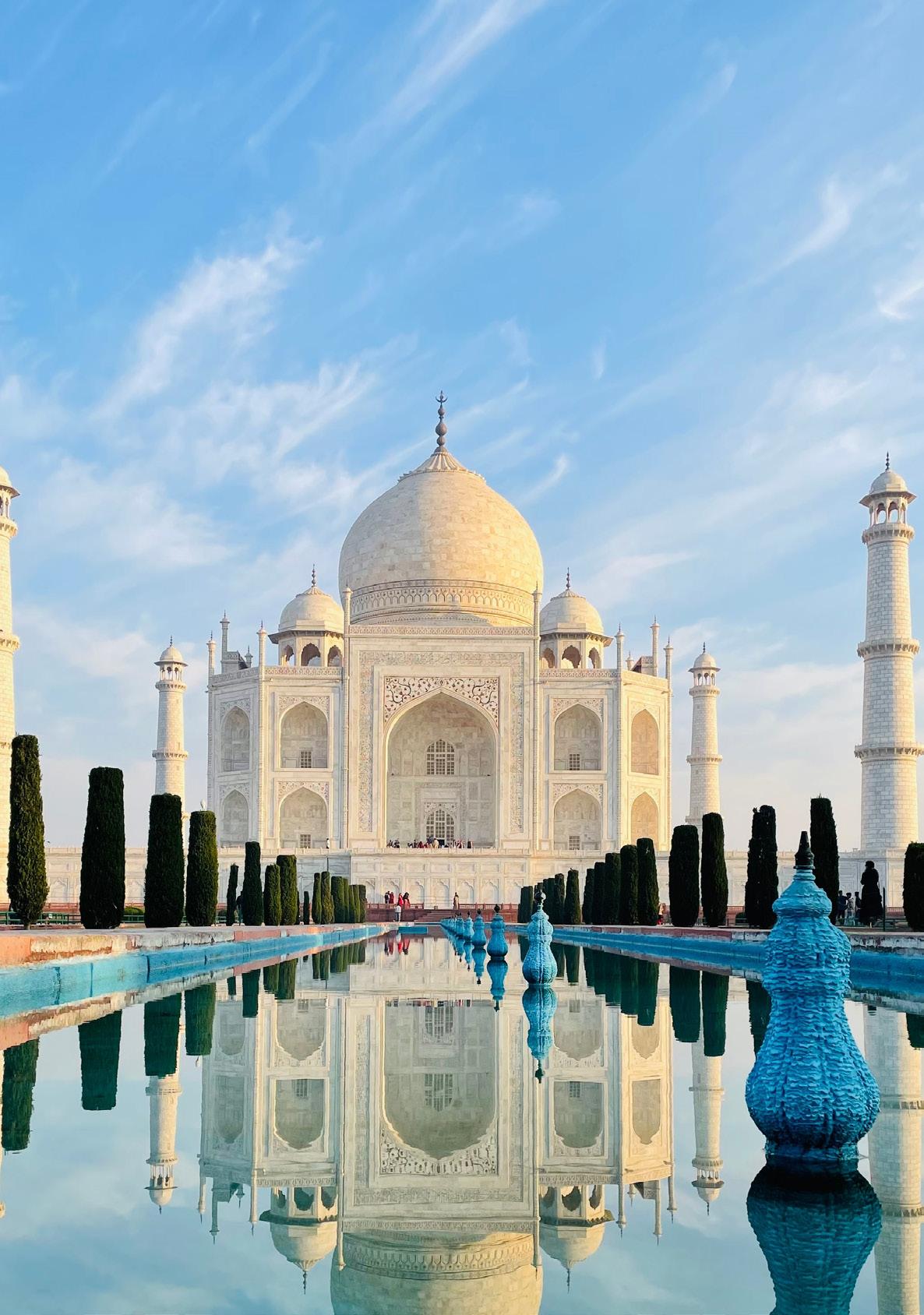
17 DAYS FROM £6,345pp Activity Level
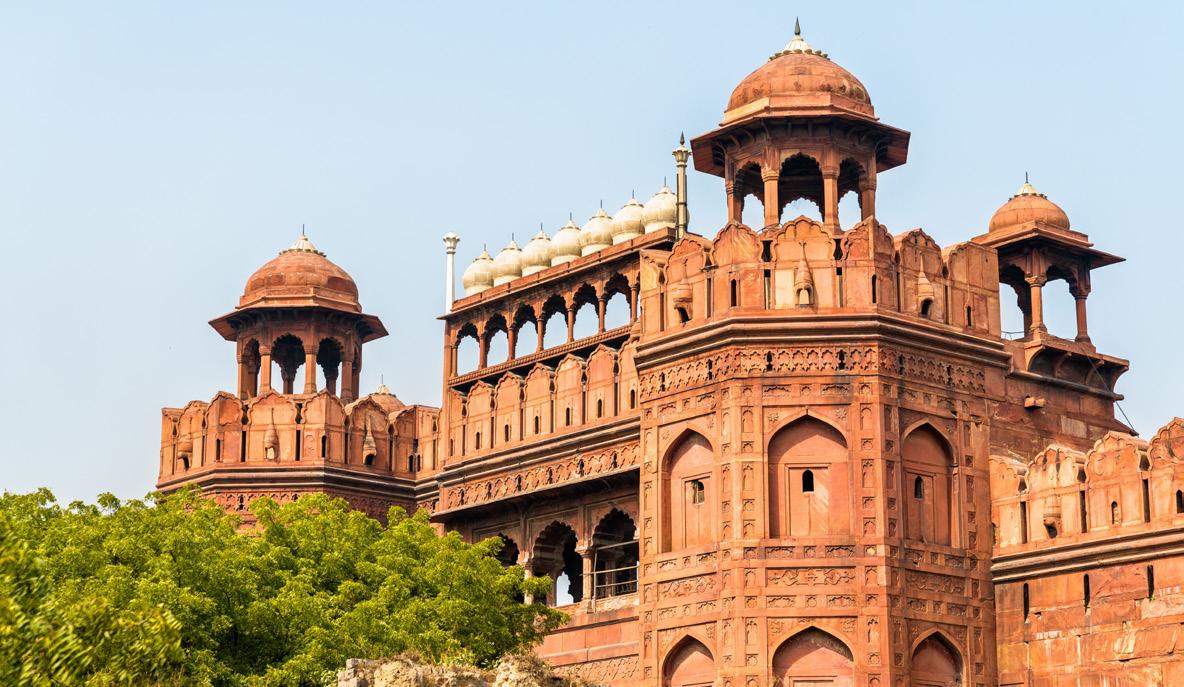
Discover no fewer than 8 UNESCO World Heritage Sites including the majestic Taj Mahal and Jaipur’s Amber Palace
Enjoy an early morning boat trip along the sacred ‘ghats’ of the Ganges at Varanasi
Explore the great palaces and fortresses of the ancient Rajasthani cities of Udaipur, Jodhpur and Jaipur
View Khajuraho’s amazing sculptures and some of the world’s finest temple carvings, known for portraying women
How to encompass in one journey the complexities of the turbulent history and spectacular cultural heritage of a sub-continent’s whose exotic traditions, architecture and art all have an immensity of appeal that could justify a lifetime’s exploration? Impossible, of course - but by its structured focus on the ancient cultures and divisions of northern India’s tumultuous past, our tour will build for you a clear picture of the infinitely diverse strands that have shaped the exotic fabric of this vast country. Carefully planned visits to many world-famous sites, monuments and leading museums bring a comprehensive understanding of the intricate cultural synthesis that has evolved between the country’s primary religious civilizations - Jain, Buddhist, Hindu and Muslim.
Highlights as we travel from Delhi through Madhya Pradesh, Uttar Pradesh, Agra and Rajasthan’s ‘Land of Kings’ include Sanchi’s fabulous stupa, the monastic excavations at Sarnath and the elaborately carved temples at Ranakpur - all illustrating the vigor of Buddhist and Jain offshoots from early Hinduism. Fascinating facets of later Hindu civilization are on display amid Khajuraho’s elaborate temples, the teeming pilgrimage centre at Varanasi and, most beautiful of all, the Rajput’s fortified palaces of Udaipur, Jodhpur and Jaipur, in striking counterpoint to Agra’s legendary Mughal masterpiece, the Taj Mahal.
We take an overnight flight from London and arrive in Delhi the following day. After taking some time to recuperate, we ease ourselves gently into the bustle of India with lunch and afternoon site visits of the city’s major landmarks. We first visit Qutb Minar, an iconic 12th -century, UNESCO-listed minaret and take in its surrounding complex that preserves remains from every era of Delhi’s history. From there, we continue on to the imposing Humayun’s Tomb, dating from 1572 and whose palatial Heritage-listed Mughal architecture is significant as the possible inspiration for the Taj Mahal.
This morning we bask in the richness of Old Delhi with a visit to the red stone marvel that is the UNESCO-listed Lal Qila (“Red Fort”). Built by Sha Jahan, this 254-acre site embraces palaces, entertainment halls, indoor canals, and geometrical gardens and its name derives from the rich red sandstone of its massive walls. We then move on to another of Sha Jahan’s constructions: the great Jama Masjid. India’s largest mosque, the Jama Masjid is a red-sandstone-and-marble oasis of calm, with minarets rising high above the city and has the capacity for 25,000 worshippers. After breaking for lunch, we enjoy an in-depth visit to the city’s
YOUR EXPERT GUIDE
Dr Mehreen Chida-Razvi Mehreen is a Research Associate in the Department of the History of Art & Archaeology at SOAS, University of London, and Assistant Editor for the International Journal of Islamic Architecture.


National Museum, displaying a feast of ancient archaeological artifacts and artworks, including the famous prehistoric bronze sculpture known as the Dancing Girl of Harappa - as well as archaeologistexplorer Sir Aurel Stein’s collection from his travels along the Silk Road.
A morning flight takes us south-east to ancient Varanasi in Uttar Pradesh, acknowledged as India’s spiritual capital and long a major pilgrimage destination for Hindus, Buddhists, and Jains. After settling into our hotel, we spend the afternoon at the 3rd-century remains of the monastic Continued...
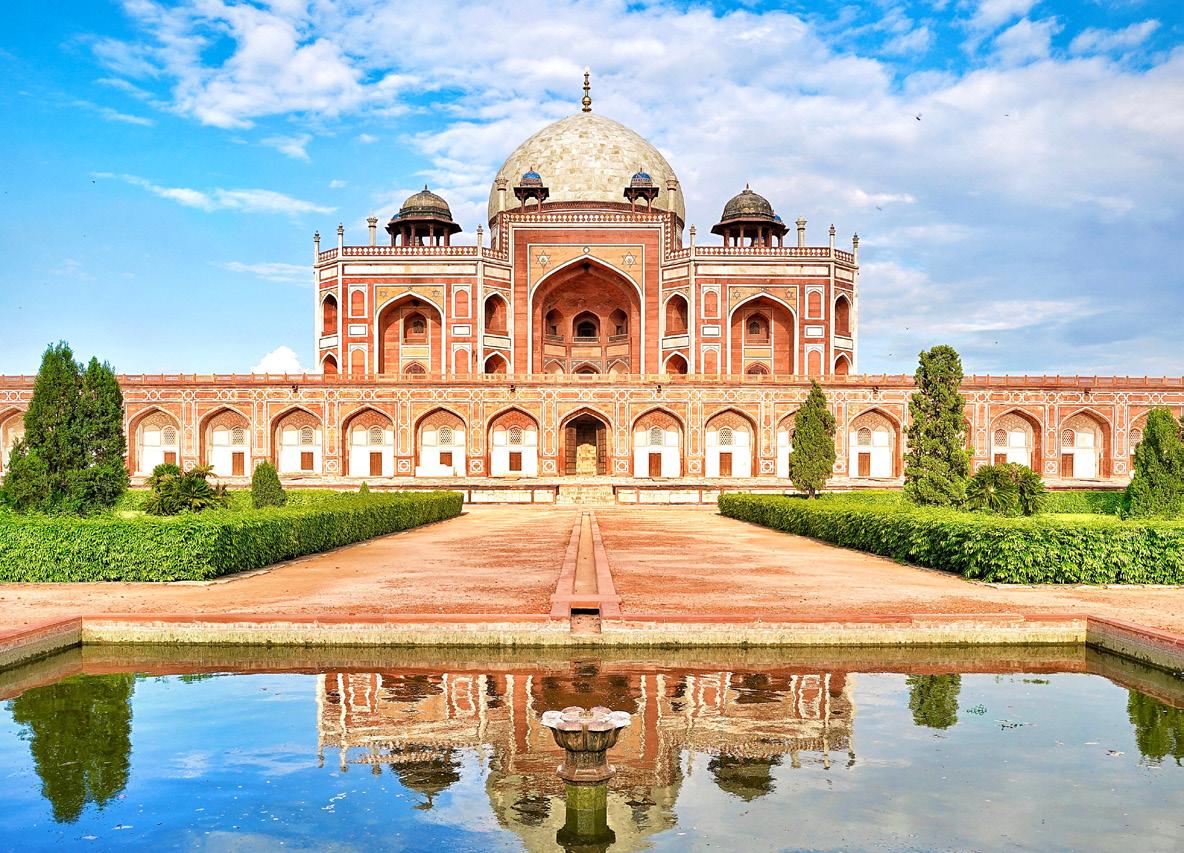
centre at nearby Sarnath as this was where, after receiving enlightenment, Buddha gave his famous first sermon 2,500 years ago to preach the message of the middle way to nirvana. We have ample time to explore the site, including the great Dharmarajika Stupa, as well as its small archaeological museum. Here, we can find a host of unique archaeological materials, painting, textiles and artifacts. One such artifact is India’s official symbol, the Lion Capital, carved with back-to-back lions. It was originally part of the Ashoka Pillar erected here by Emperor Ashoka in the 3rd century BCE.
Day Five | Varanasi – Khajuraho
Our day begins early with the unique experience of a morning boat trip on the Ganges as vast numbers of Hindu pilgrims flock to the “ghats” (steps leading down to the water) to bathe in the river’s sacred waters. We also take in the sights of the Bharat Mata temples and the Vishwanath Temple, thus completing our well-rounded morning excursion. Thereafter, we take a short flight to Khajuraho where the temples of this region celebrate the joy of life and love, portraying women in all their sensuality and are considered to be the epitome of Hindu sculpture.
This morning’s Khajuraho exploration is dedicated to the Eastern Temple Group, dominated by four Jain temples constructed by the Chandela rulers. The architectural masterpiece of the group is Khajuraho’s largest Jain shrine, the 10th century Parsvanatha temple, with its charming sculptures that depict a number of informal everyday scenes. Afterwards, we head on to the Western Temple Group, whose especially accomplished masterpieces include the grand Kandariya Mahadeva temple, embellished
with a profusion of intricate ancient sculptures, and Devi Jagdamba, with its sensually carved statuary. This afternoon will be at leisure.
Day Seven | Khajuraho – Orchha
A morning drive brings us to medieval Orchha. The town was founded in the 16th century by the Bundela king, Rudhra Pratap who, together with his successors, bestowed to Orchha a superb legacy of Mughal-influenced Rajput architecture within its fort complex - in the form of three handsome palaces, as well as temples and 14 riverside royal “chhatris” (cenotaphs). During our stay we visit all three palaces: the Jahangir Mahal, the most grandiose structure in Orchha; the Raj Mahal with its lavish interiors; and the Rai Praveen Mahal, built by Raja Indramani for his poetess concubine.
Day Eight | Orchha - Gwalior
After breakfast, we head to Gwalior, visiting Bir Singh Palace in Datia en route. This palace is one of the finest examples of domestic architecture in India. The summit is ornamented by numerous chhatris crowned with ribbed domes, while many of the ceilings are finely carved. We continue to Gwalior, established in the 8th century and named after Saint Gwalipa. Formally the capital of Madhya Bharat it was ruled by Tamar kings, the Mughals and the Marathas.
Day Nine
We explore the ancient city of Gwalior this morning. The city is dominated by its 15th century hill-top fort, arguably one of the most redoubtable in the world. After lunch we board a train to Agra, the quintessence of the grand Mughal era. Agra is globally renowned as the city of the Taj Mahal, but this royal Mughal city has many monuments that epitomize the high point of Mughal architecture.
Agra is known worldwide as the home of the renowned UNESCO-listed Taj Mahal and our stay here naturally gives due priority to this iconic monument - while not neglecting other important sites of the city’s Mughal empire legacy. Our unhurried tour of the Taj and its gardens will inevitably exceed your expectations as the almost ethereal beauty of Emperor Shah Jahan’s 17th century “symphony in white marble” is a great achievement of Mughal architectural. Built by the Emperor in memory of his beloved wife, Mumtaz Mahal, the Taj required the work of 20,000 men over a 20-year period and it survives to this day as an unchallenged monument to love. Our day also includes a visit to the nearby 16th century Red Fort, a powerful Mughal fortress encompassing what was the original imperial city of the Mughal rulers - and setting of Shah Jahan’s beautiful Jahangir Palace and Khas Mahal Palace, as well as two splendid mosques. We also see Itimad-ud-Daulah, the all-marble garden mausoleum of Mumtaz Mahal’s grandfather, affectionately known as the “Baby Taj”, and other buildings of interest for their distinctive Mughal architecture.
This morning, our journey takes us west to Jaipur, visiting en route the UNESCO-listed Fatehpur Sikri - “the City of Victory”. The empty halls and courtyards of this great red sandstone palace complex are a 16th-century monument to a rare Mughal failure: Emperor Akbar commemorated the birth of a son by building a new capital here, only to have to abandon this Indo-Islamic architectural masterpiece 15 years later owing to an inadequate water supply. From this haunting and evocative setting, we continue to the contrasted animation of colourful Jaipur, with the rest of our day at leisure.
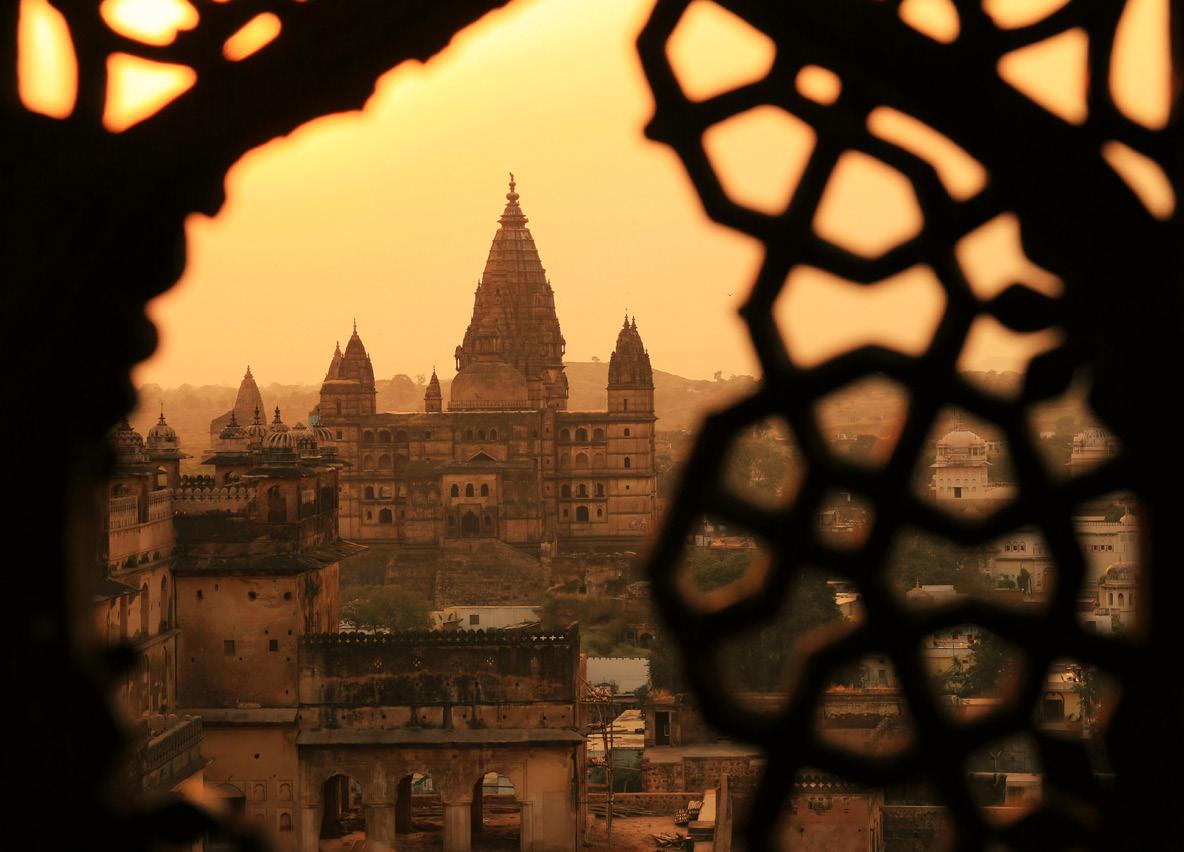
Day Twelve | Jaipur
Our day begins with a short drive to Amber once capital of Jaipur, where we visit the ancient UNESCO-listed fort and former residence of its Rajput rulers. Spectacularly situated on a hill overlooking Maota Lake, we have ample time to explore this spectacular heritage site. Afterwards we return to Jaipur the restless yet beguiling capital of the desert state of Rajasthan (literally, “the Land of the Kings”) where we explore the ornately decorated red and pink sandstone Old City Palace complex, built by Maharaja Sawai Jai Singh in 1728. An altogether stunning fusion of Rajasthani and Mughal architecture, the palace houses Jaipur’s Textiles and Costumes Museum. Our final stop of the day is at the Jantar Mantar, a heritage-listed 18th century astronomical observation site.
Day Thirteen | Jaipur - Jodhpur
We make the long journey west to Jodhpur at the edge of the vast Thar desert, arriving late in the afternoon. Amid the tangled lanes of its maze-like old quarter, snug behind 16th century walls, lies a jumble of countless, blue-painted houses known as the ‘Brahmin houses’. While once a symbol of its inhabitants’ caste, they now represent Jodhpur, which now has the title of “The Blue City”. After checking in and resting, we take an evening walking tour of the bustling traditional market and the narrow avenues of this old city.
Day Fourteen | Jodhpur
Today we will explore some of the very colourful hamlets inhabited by the Bishnoi people, a Hindu religious sect. These interesting people are potters and weavers and are followers of a 15th-century sage whose creed focused on protecting every living thing. After lunch, we visit the imposing hilltop Fort of Mehrangarh, a source of protection for
the city’s inhabitants for more than 600 years. From the top of the fort, one can get a bird’s eye view of the old city to the Jaswant Thada.
Day Fifteen | Jodhpur - Udaipur
We travel to Ranakpur to explore the exquisitely carved and memorably serene 15th century temple site, a major Jain pilgrimage centre occupying an extensive area deep in a shady glen. The central Chaumukha (four-faced) temple is the most complex and extensive of Jain temples in India. Its 29 marble halls and 80 domes are supported by 1,444 individually engraved pillars - while a host of subsidiary side-altar shrines includes a temple dedicated to the Sun God which displays erotic carvings. From Ranakpur we continue to the romantic city of Udaipur set beside Lake Pichola, ringed beyond by the wooded Aravalli Hills that stretch away in every direction.
Day Sixteen | Udaipur - Delhi
We enjoy a morning excursion to see the fabulous City Palace and the 17th century Jagdish Temple, elaborately carved with figures of Vishnu. After lunch we fly to Delhi and then in the evening meet as a group for our farewell dinner.
Day Seventeen | Delhi – London
We transfer to Delhi Airport for our return flight back to London.
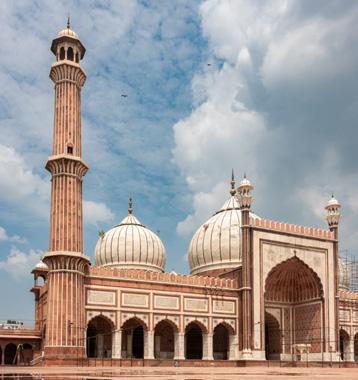
YOUR COMPREHENSIVE EXPERT GUIDED TOUR INCLUDES
• Expert Guide Lecturer & Professional Tour Manager
• Entries to all sites as per the itinerary
• Field notes
• All taxes & gratuities
Included travel
• Return flights from London & all local transport
Accommodation
• Accommodation in The Suryaa New Delhi, Radisson Hotel Varanasi, Radisson Hotel Jass Khajuraho, Amar Mahal Orcha, Radisson Hotel Gwalior, Grand Mercure Agra, Hilton Jaipur, Novotel Jodhpur ITI Circle & the Shikarbadi Hotel or similar
Culinary inclusions
• 16 breakfasts, 15 lunches & 15 dinners
• Water with all meals, tea or coffee with dinner
Dates & prices per person
Date Twin/Dbl Share SS 6th - 22nd Dec
£6,795
£6,345
£1,210
Save £450pp with our 2025 Special Offer
For full details of this tour visit andantetravels.co.uk/anin
Celebrate the New Year in this uniquely beautiful city
7 DAYS FROM £4,095pp Activity Level

The uniquely beautiful city of Venice built on 118 islands joined by waterways and bridges, was once one of the greatest independent republics in the world. Join Dr Eireann Marshall who leads our tour introducing us not only to some of the city’s iconic highlights but also to various themes of the city’s past – its origins, development and importance. Join us this winter as we enjoy a privileged view of this maritime republic, as the city celebrates the New Year.
Enjoy an exclusive visit to the Biblioteca Marciana, famed for its important collection of Byzantine manuscripts
Explore the unique Basilicas of Santa Maria Assunta in Torcello and Santa Maria e Donato in Murano
Examine the Venetian Ghetto and visit some of its synagogues
We fly from London to Venice and on arrival we visit Altinum, an ancient Roman city that was abandoned after the Hunnic and Gothic invasions when the population sought refuge in the Venetian lagoon. Later, we transfer to our hotel and relax for the evening.
Our day begins with a visit to Torcello where we explore the Cathedral of Santa Maria Assunta with its stunning Byzantine mosaics. After lunch, we pay a short visit to Burano and continue to Murano, famed for its Byzantine Basilica di Santa Maria e Donato
Today we explore more of Venice. We start with St. Mark’s Square and continue to the Doge’s Palace. After lunch, we enjoy a private visit to the Biblioteca Marciana. The afternoon concludes with an optional visit to the Museo Correr, which houses important artefacts from the city’s illustrious past. This evening, we visit the Basilica of Saint Mark
We start at San Lazzaro degli Armeni and continue to the neighbouring island of San Giorgio Maggiore, known as the island of cypresses, where we visit the beautiful Chiesa di San Giorgio Maggiore founded in the 10th century. In the afternoon, we take the
Vaparetto down the Grand Canal to the Basilica of the Frari and visit Scuola Grande di San Rocco Tonight, we enjoy a special gala dinner to celebrate the New Year and visit the island of San Giorgio which affords a wonderful view of the fireworks.
We take a guided walk around the Castello district to explore everyday life in Venice, including the Greek and Dalmatian neighbourhood and end the morning with a visit to the Porta dei Leoni which was the land entrance of the Arsenale, the extraordinary shipyard, which made Venice great. After lunch, we walk to the Campo Santa Maria Formosa and visit the wonderful Palazzo Grimani
The day starts with a visit to the important Basilica di Santi Giovanni e Paolo, which houses several dogi’s tombs, and we explore the adjacent square for the façade of the Scuola Grande di San Marco and Verrocchio’s masterful equestrian statue of Bartolomeo Colleoni. We continue to the nearby Chiesa di Santa Maria dei Miracoli and conclude the morning with a visit to the most famous bridge in Venice, the Rialto. After lunch, we visit the Ca d’Oro, perhaps the most beautiful palazzo on the Grand Canal and today the home of a wonderful art collection.
This morning we make our way to Venice Airport by water taxi to catch our flight back to London.

YOUR EXPERT GUIDE
Dr Eireann Marshall

Dr Eireann Marshall is a Research Associate and Associate Lecturer with the Open University. She has published a number of articles on Ancient North Africa, and coedited volumes on ‘Death and Disease in the Ancient City’ and ‘Women’s influence on Classical Civilisation’. Eireann has led many tours for Andante, including several to Ravenna, Venice, Pompeii, Sicily and Tunisia, and is bilingual in English and Italian.
YOUR COMPREHENSIVE EXPERT GUIDED TOUR INCLUDES
• Expert Guide Lecturer & Professional Tour Manager
• Entries to all sites as per the itinerary
• Field notes
• All taxes & gratuities
Included travel
• Return flights from London & all local transport Accommodation
• Accommodation in the Hotel Saturnia Culinary inclusions
• 6 breakfasts, 5 lunches & 6 dinners
• Water with all meals, wine and tea or coffee with dinner
Dates & prices per person
Date Twin/Dbl Share SS 28th Dec - 3rd Jan
£4,395 £4,095 £765
Save £300pp with our 2025 Special Offer
For full details of this tour visit andantetravels.co.uk/avex
Explore this ancient capital, unimpeded by the usual crowds
6 DAYS FROM £2,645pp Activity Level

Like most large cities, the sprawling city of Athens is a patchwork of urban neighbourhoods each with their own identity where history happily co-exists with everyday life, from the street art that’s become the city’s trademark to the markets, specialist shops and restaurants. On our winter tour we will explore the important monuments of this most seminal of cities and celebrate New Year with local Athenians. The New Year’s countdown is a night long celebration in Athens kicking off with a spectacular firework display over the Acropolis which lights up the Athenian sky at midnight. Our base is at the family-run Herodion hotel, in the heart of the Plaka and at the foot of the Acropolis where we can take advantage of the views from its rooftop bar and restaurant.
Explore three fabulous world class museums housing between them some of the greatest collections of antiquities in the world
Enjoy Athens like the locals do enjoying some favourite corners of this famous city
Discover Kerameikos, a beautiful, tranquil site which marked the starting point of the Panathenaic procession
We fly from London to Athens and transfer to our hotel in the heart of the Plaka.
Our first full day is dedicated to the Acropolis and its museum. We explore ancient Athens, past the Theatre of Dionysus and on to the towering remains of the Odeon of Herodes Atticus, one of the landmarks of Athens. From here we climb to the incomparable Acropolis which still dominates the city with a complex of religious sanctuaries, the most famous of which is the Parthenon.
After lunch in the Plaka, we visit the Acropolis Museum. Here we can see many ancient artefacts found in and around the Acropolis, including the superb Parthenon frieze. The top floor of the museum is designed on the same axis as the Parthenon so that it has an identical cardinal orientation and you can walk along the entire frieze of the temple, exactly as it would have been in ancient times.
In the morning we visit Kerameikos, named in ancient times after the hero Keramos, son of Dionysus and Ariadne. Here we see remains of the massive Dipylon Gate and the Sacred Gate In the afternoon we visit the Cycladic Museum established to showcase the private collection of the Goulandris shipping family.
We continue our exploration of Athens, visiting its ancient economic centre, the Agora. Buildings of note include the city’s arsenal, the Tholos and several stoas (the museum is housed in the reconstructed stoa of Attalos). Here we find the temple of Hephaestus, one of the best-preserved of its type in Greece. After lunch, we visit the National Museum of Athens. Now somewhat overlooked by visitors flocking to the Acropolis Museum, it is worth remembering that this older museum is still home to one of the greatest collections of antiquities in the world. This evening, we celebrate New Year’s Eve.
This morning we take the path up to Philopappos Hill, where we are treated to spectacular views from here over the city, the Acropolis and the Saronic Gulf beyond. Here we also see the so-called tomb of Socrates, an impressive structure built into the rocky slope of the hill. Later we head to the Niarchos Foundation Cultural Centre where we will have lunch and spend time enjoying some of the exhibitions.
Day Six | Athens - London
We transfer to the airport for our flight back to London.
Dr Rita Roussos
Rita Roussos is a native Athenian, who grew up in California, and taught archaeology and art history at the American University of Athens. Her undergraduate degree is in Classical Languages from the University of California, Berkeley, while her PhD is from the Courtauld Institute of Art, University of London. Rita’s research interests include the place of women in ancient Greece and Rome as well as Greek sculpture of the fourth century BC. She has worked on archaeological projects at Isthmia, Kato Lossous, Mantinea and has led several of Andante’s tours to Greece.

YOUR COMPREHENSIVE EXPERT GUIDED TOUR INCLUDES
• Expert Guide Lecturer & Professional Tour Manager
• Entries to all sites as per the itinerary
• Field notes
• All taxes & gratuities
Included travel
• Return flights from London & all local transport Accommodation
• Accommodation in the Herodion Hotel, Athens Culinary inclusions
• 5 breakfasts, 5 lunches & 5 dinners
• Water with all meals, wine and tea or coffee with dinner
Dates & prices per person
Date Twin/Dbl Share SS
28th Dec - 2nd Jan £2,845 £2,645 £360
Save £200pp with our 2025 Special Offer
For full details of this tour visit andantetravels.co.uk/agny
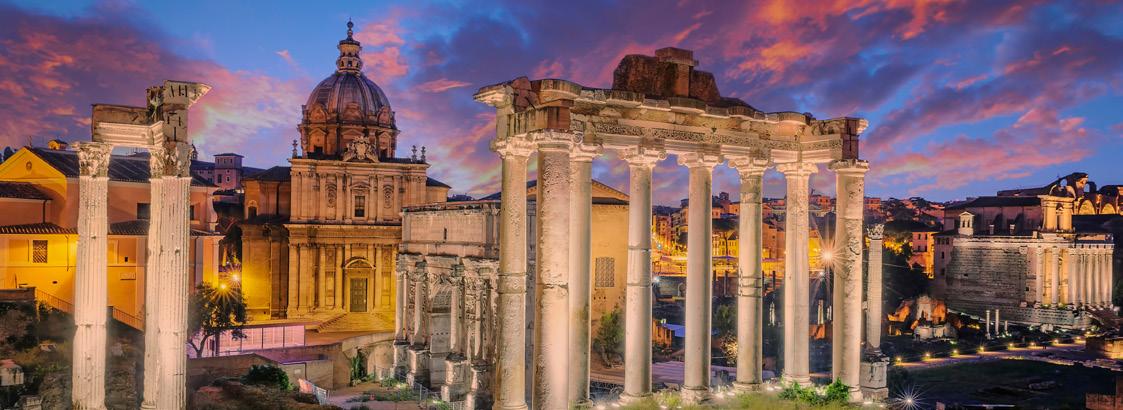
6 DAYS FROM £2,795pp
Christmas is a wonderful time to visit Rome as the streets are brightly lit and decorated, the churches display their ancient cribs, and the city celebrates. An exhilarating and intimate destination, where the glories of its ancient past mingle with museums, art-filled churches and Renaissance piazzas, this is the perfect introduction to the ‘Eternal City’ led by Oliver Gilkes, who will bring to life triumphs, tragedies and political intrigue that characterised the Roman Empire. We stay at the Hotel Santa Chiara in the very heart of the ancient city, the perfect base for exploring Rome.
Explore the atmospheric, underground service tunnels of the mighty Colosseum
Enjoy the glorious collections and masterpieces on view at the Capitoline Museums
Discover some extraordinary ‘hidden’ gems and world-famous classical sites
A Numidian New Year
7 DAYS FROM £3,245pp
YOUR COMPREHENSIVE EXPERT GUIDED TOUR INCLUDES
• Expert Guide Lecturer Oliver Gilkes & a Professional Tour Manager
• Entries to all sites as per the itinerary
• Field notes
• All taxes & gratuities
Included travel
• Return flights from London & all local transport
Accommodation
• Accommodation in the Hotel Albergo Santa Chiara
Culinary inclusions
• 5 breakfasts, 4 lunches & 5 dinners
• Water with all meals, wine and tea or coffee with dinner
Dates & prices per person
Date Twin/Dbl Share SS
21st - 26th Dec £2,995 £2,795 £270
Save £200pp with our 2025 Special Offer
For full details of this tour visit andantetravels.co.uk/arox
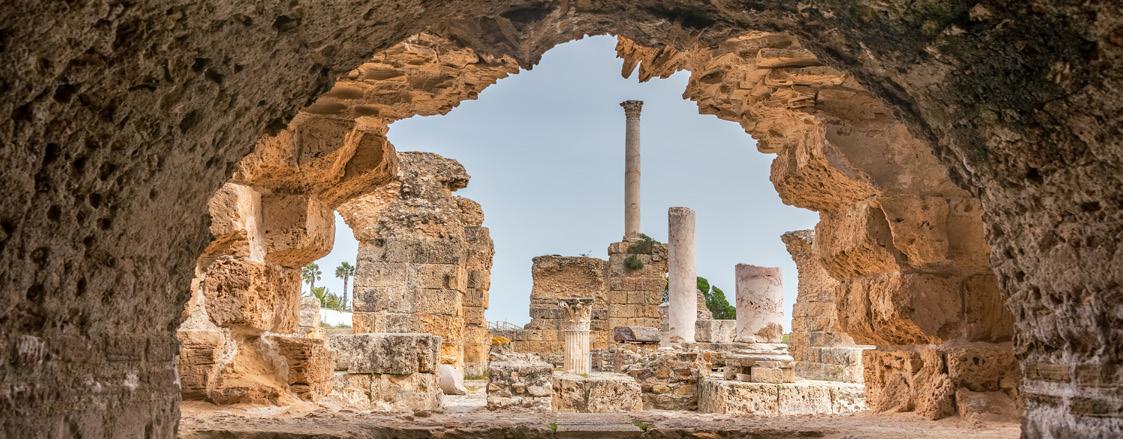
Join us in North Africa as we celebrate the New Year amongst the beautiful sites of Tunisia. Tony O’Connor leads the way as we discover the fabulous mosaics at the Bardo (one of the biggest collections in the world), admire the magnificent but now defunct temples of Dougga and Thuburbo Majus, scale the heights of El Djem, the amphitheatre that dominates the modern town and walk inside a section of the aqueduct which once carried water 56 miles from Zaghouan to Carthage.
Visit the incredible El Djem amphitheatre, Africa’s largest and best-preserved
Admire some of the world’s most impressive mosaics at the Bardo, Sousse and El Djem museums
Explore the UNESCO-listed sites of Dougga and Kairouan
YOUR COMPREHENSIVE EXPERT GUIDED TOUR INCLUDES
• Expert Guide Lecturer Tony O’Connor & a Professional Tour Manager
• Entries to all sites as per the itinerary
• Field notes
• All taxes & gratuities
Included travel
• Return flights from London & all local transport Accommodation
• Accommodation in Hotel Residence, Tunis & Hotel Kasbah, Kairouan
Culinary inclusions
• 6 breakfasts, 5 lunches & 6 dinners
• Water with all meals, wine and tea or coffee with dinner
Dates & prices per person
Date Twin/Dbl Share SS
27th Dec - 2nd Jan £3,495 £3,245 £530
Save £250pp with our 2025 Special Offer
For full details of this tour visit andantetravels.co.uk/acrx